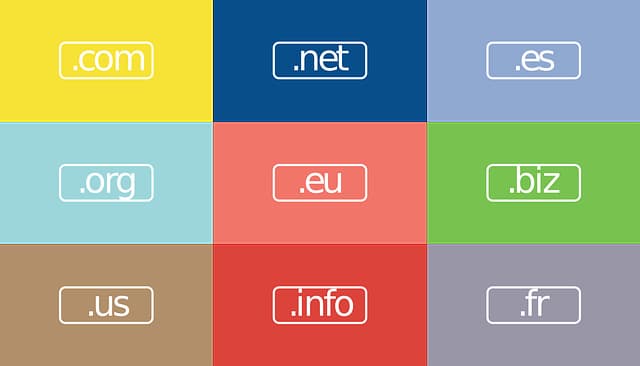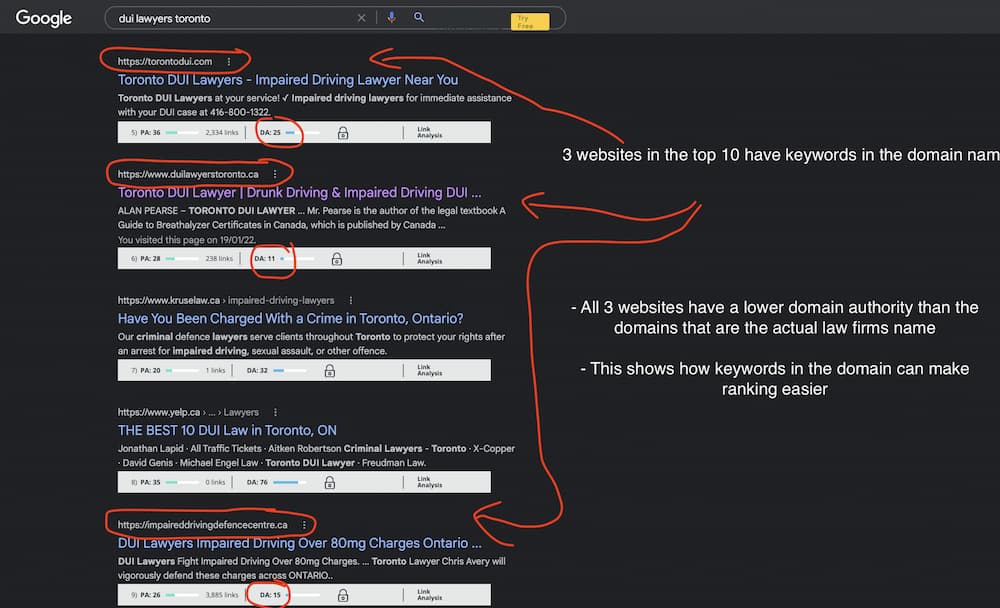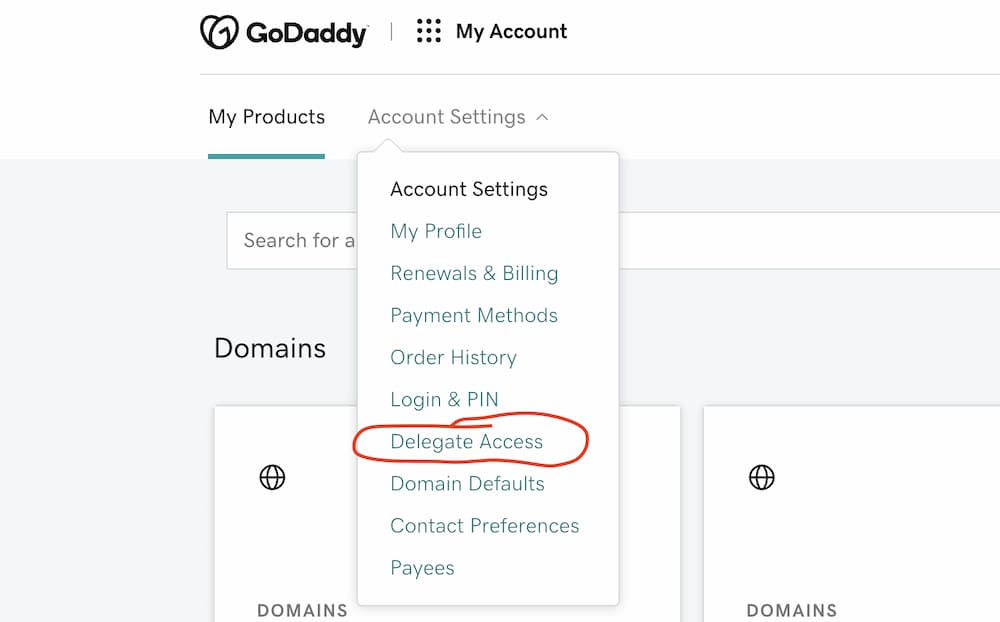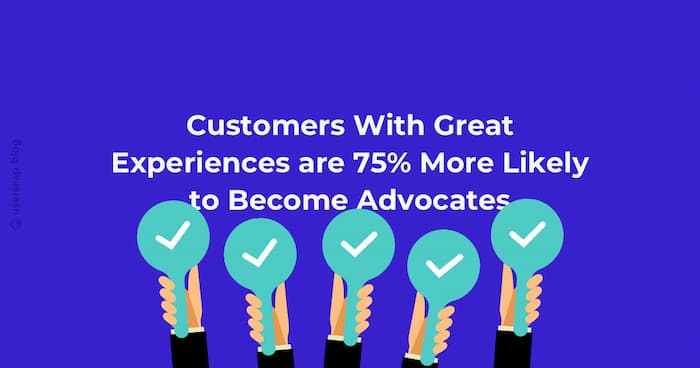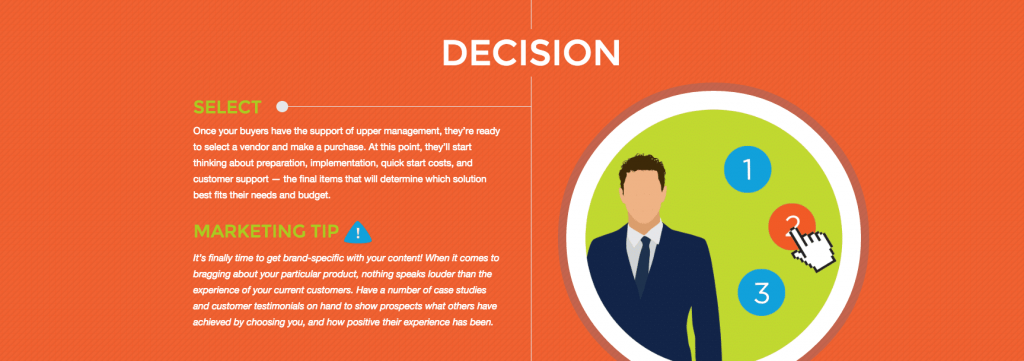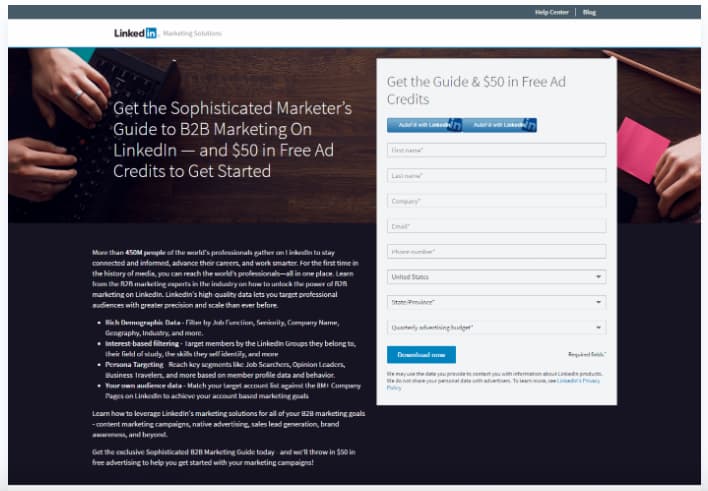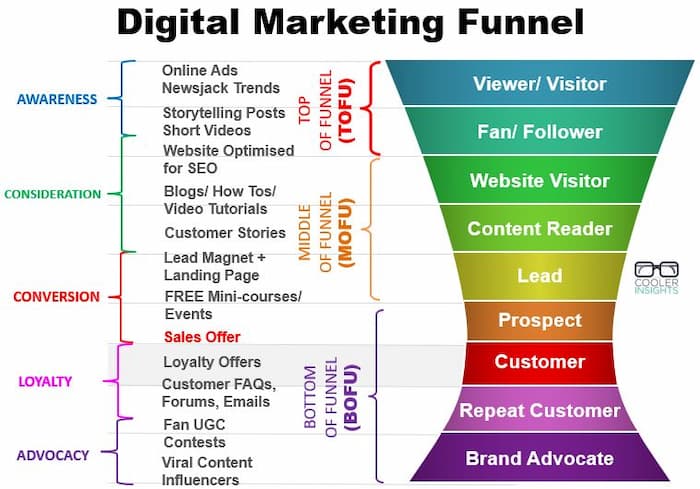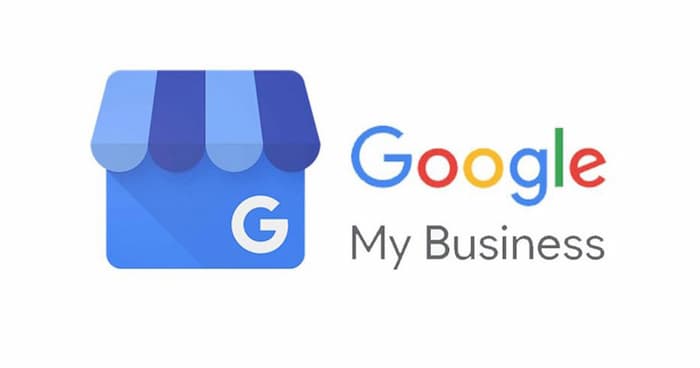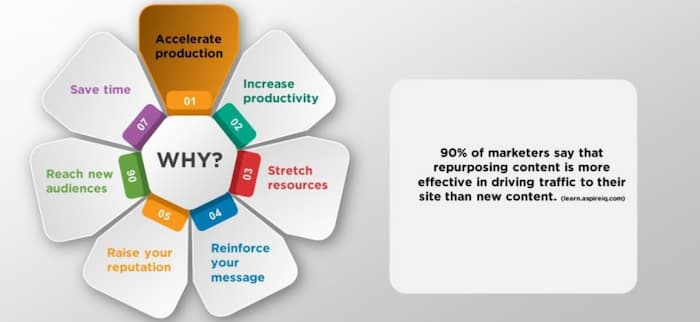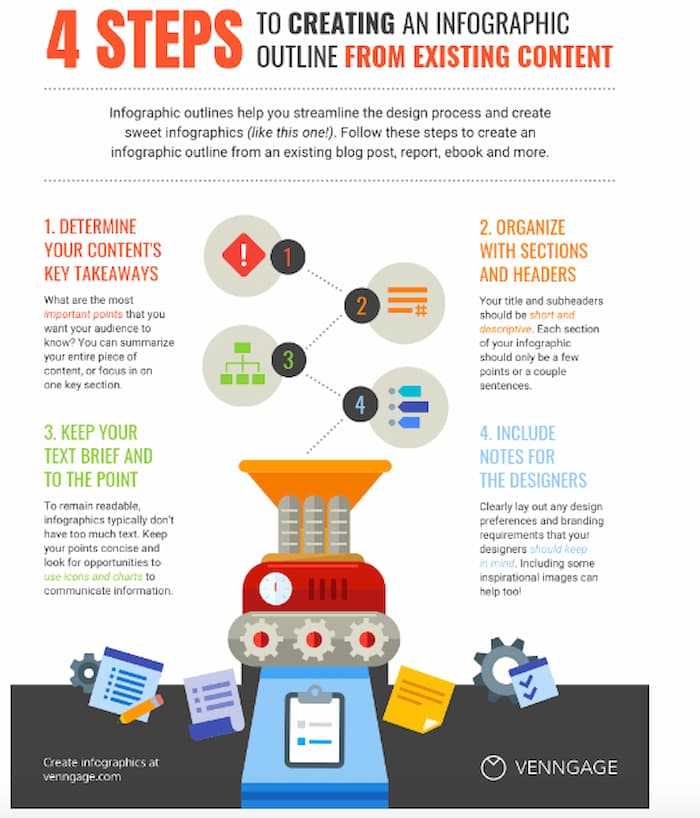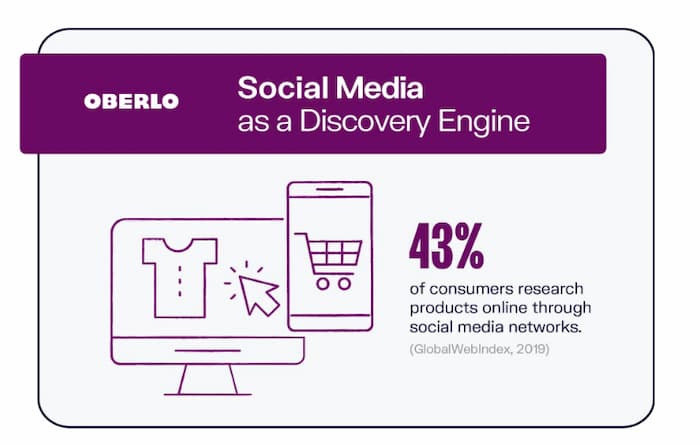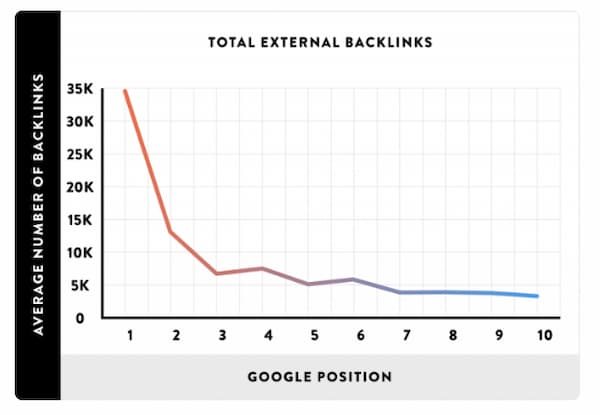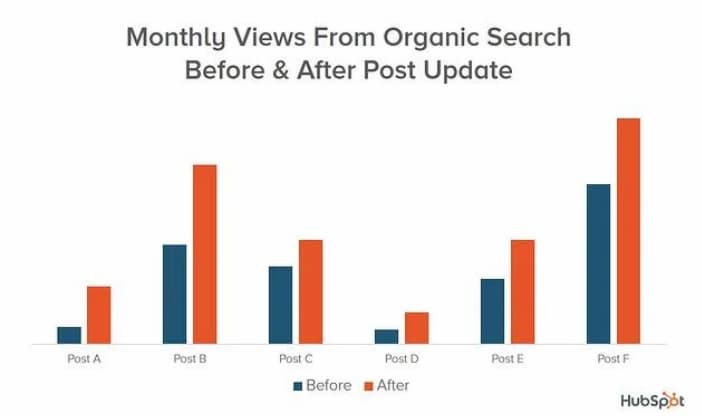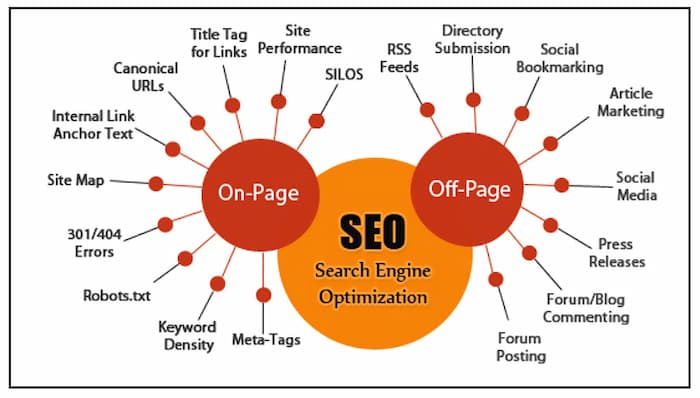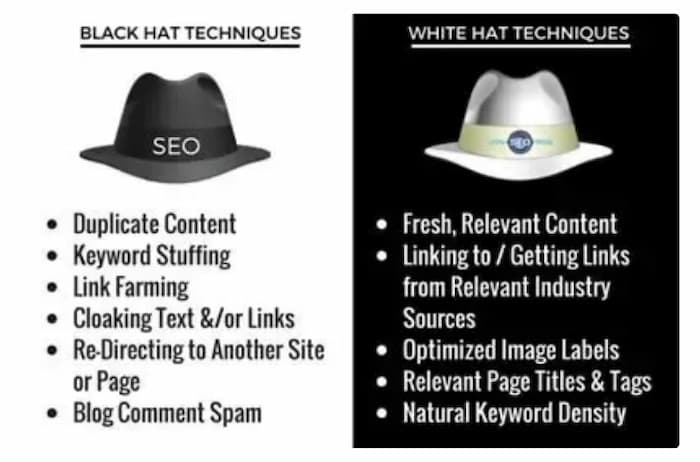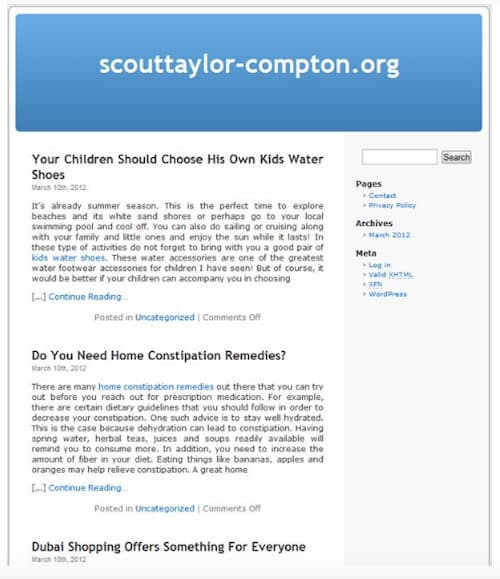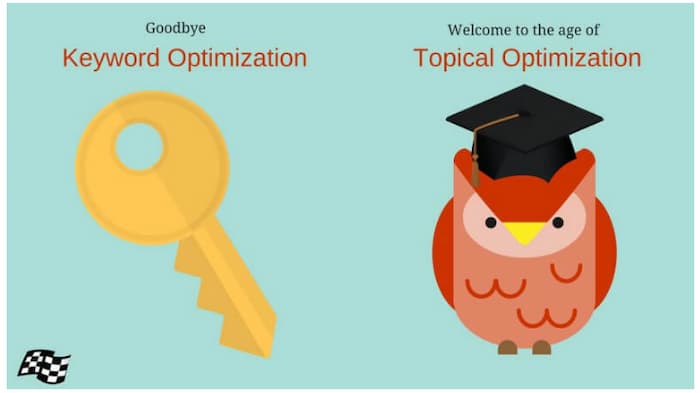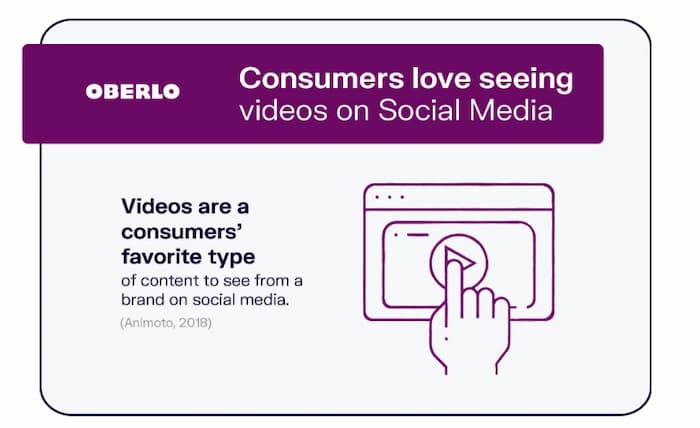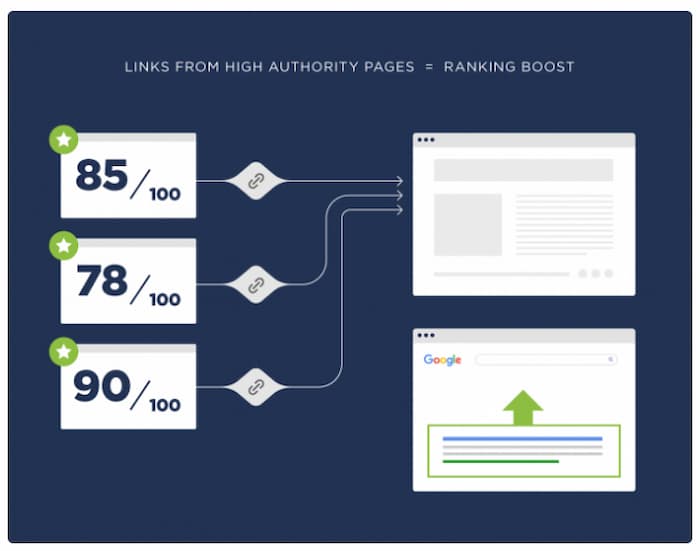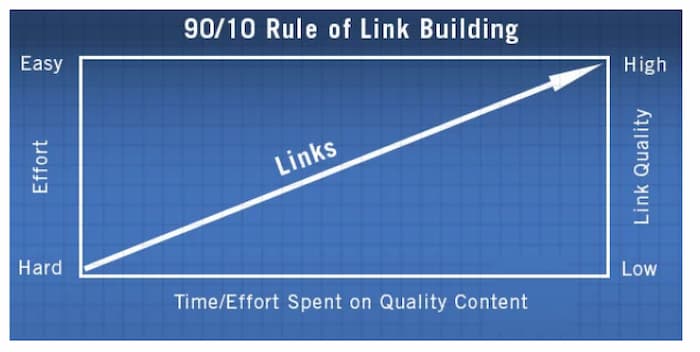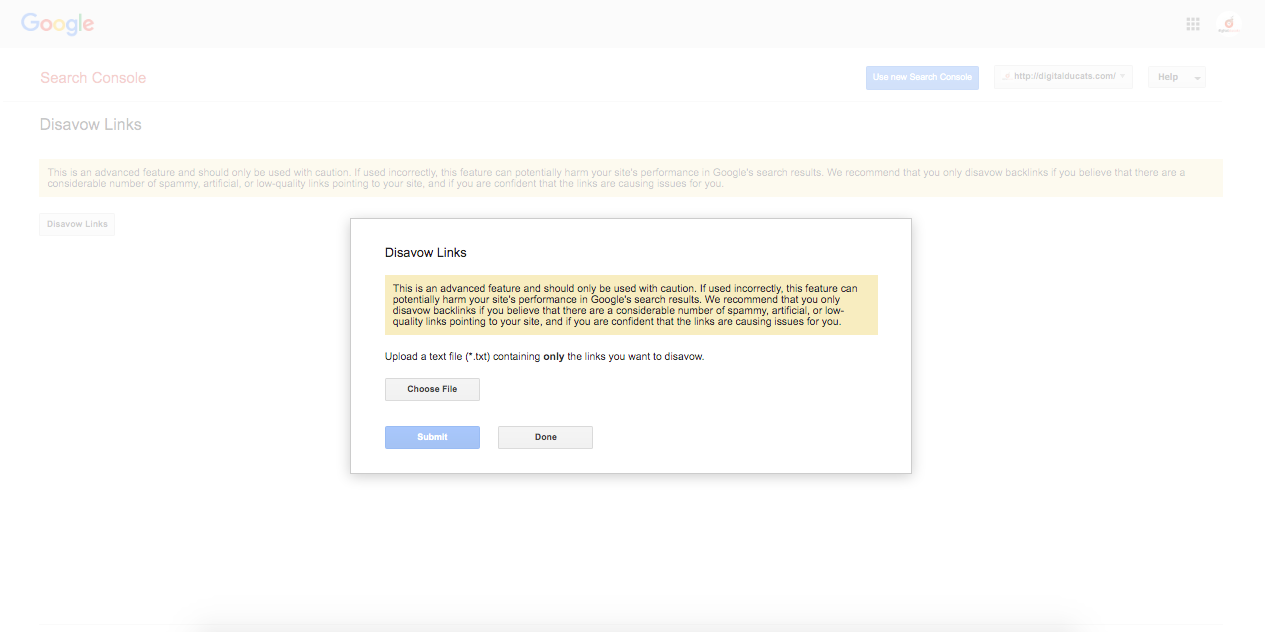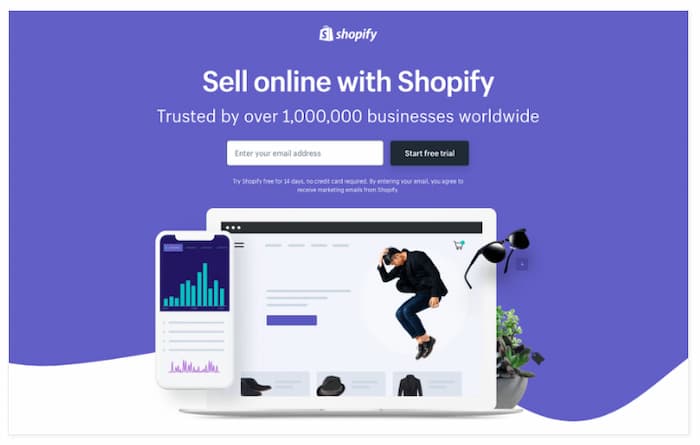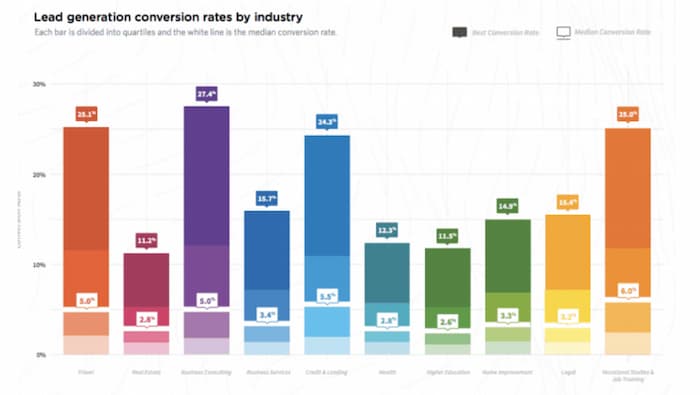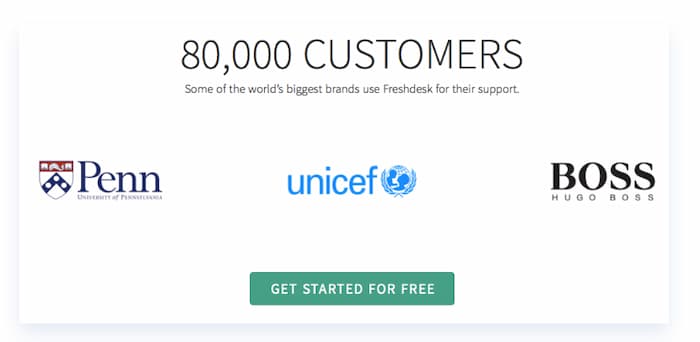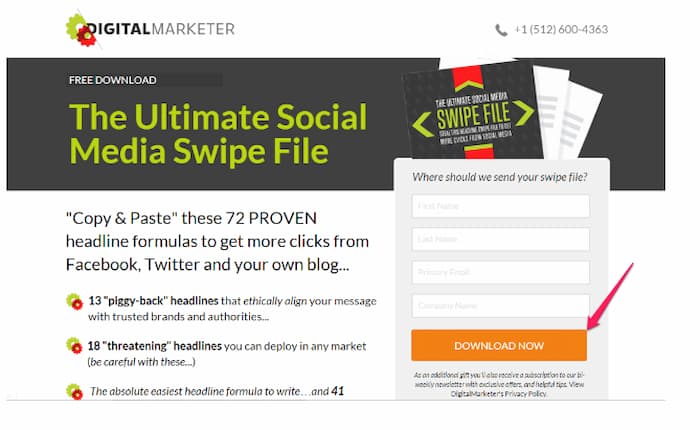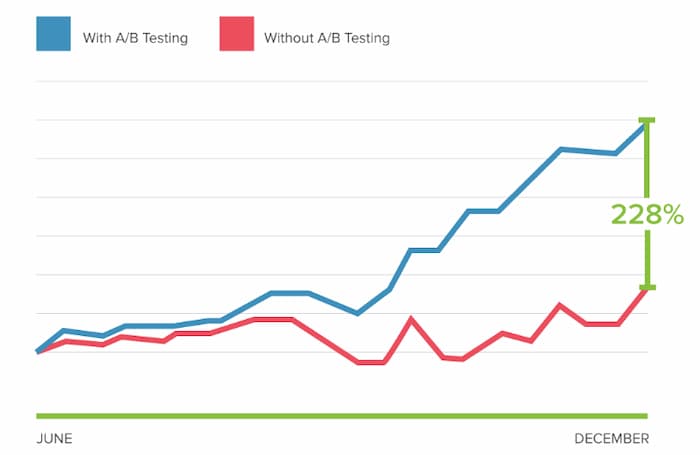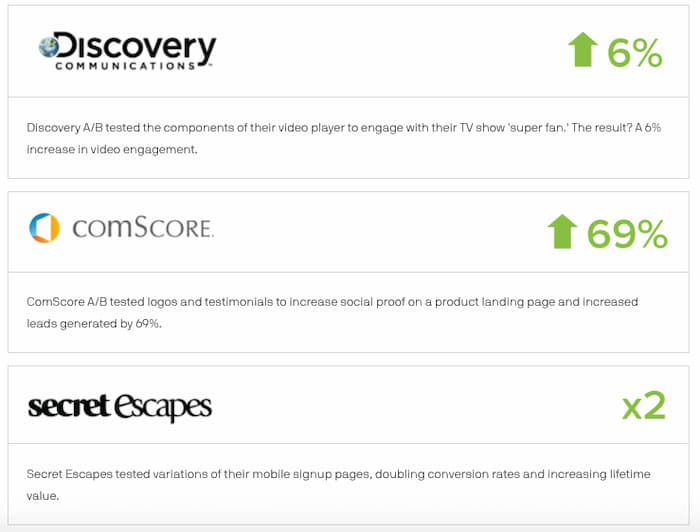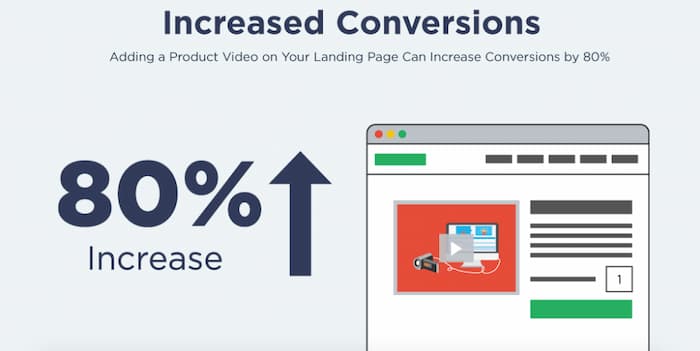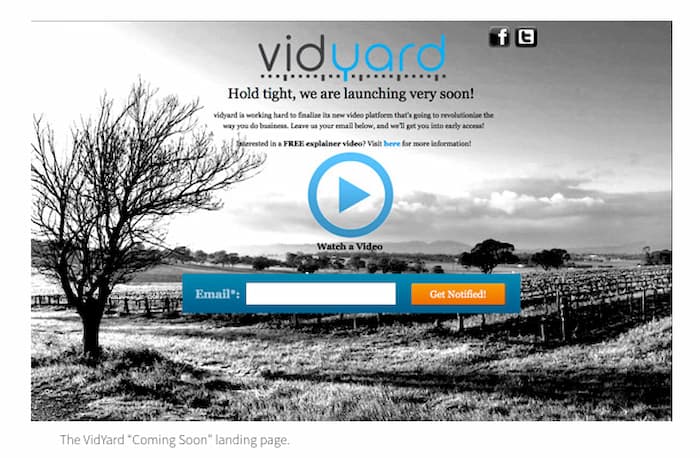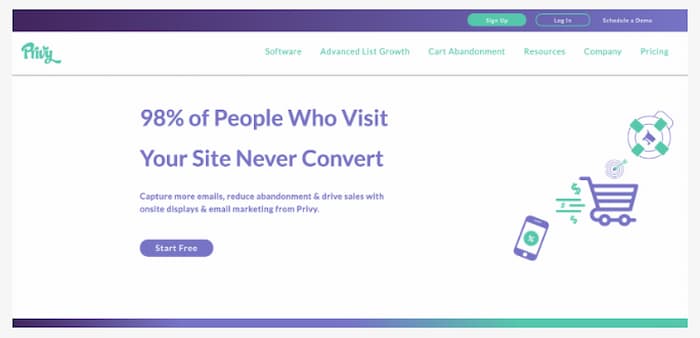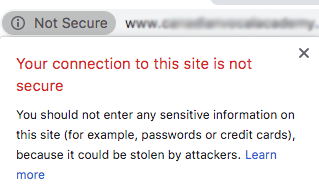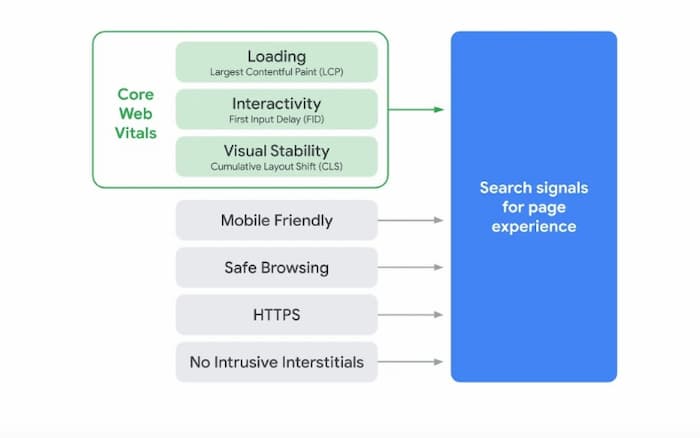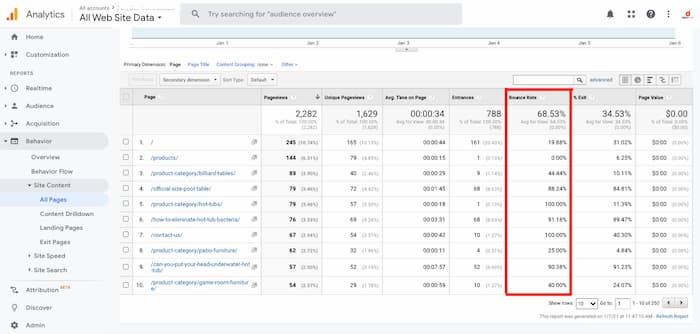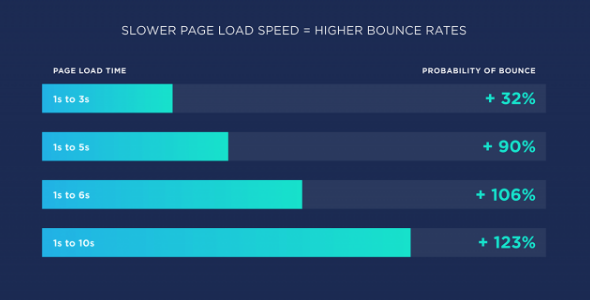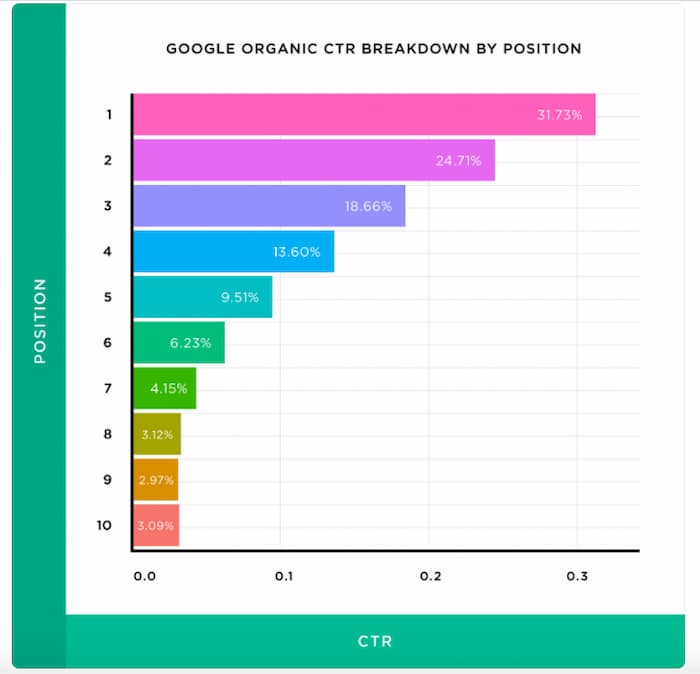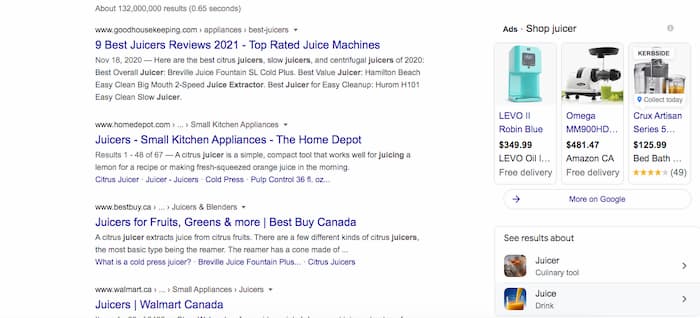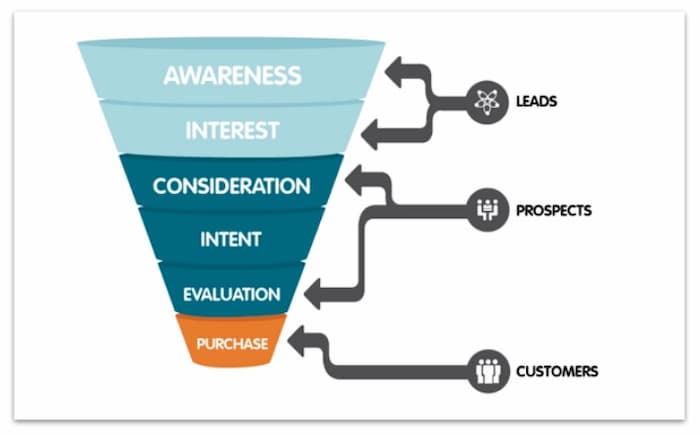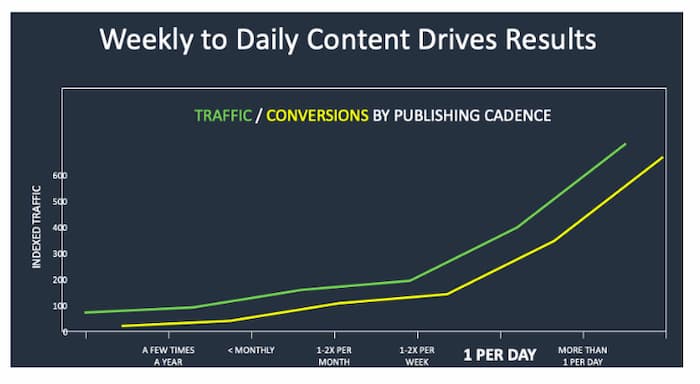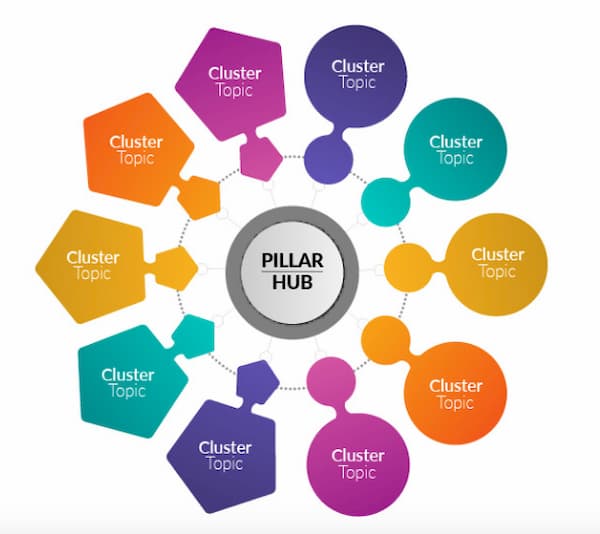33 Ways To Drive More Traffic To Your Website
The number of ways to drive more traffic to your website is growing by the day. New ways of sharing, new websites and new developments have created a long list of options to choose from. At the end of the day, you need to do what makes sense for your business, within an acceptable time frame and within the limit of your resources.
Whether you’re doing your own SEO for your small business or are just getting acquainted with how to drive more traffic to your website, here are 33 methods to produce that long-anticipated spike in your monthly search volume.
- Publish SEO content
- Build links
- Improve CTR
- Repurpose content
- Update content
- Perform a technical audit
- Improve on-page optimization
- Guest posting
- Merge Content
- Press release
- Split testing
- Email marketing
- Page speed
- Host an event
- Website performance analysis
- Optimize for SERP features
- Use structured data markup
- Paid Ads
- Social media marketing
- Social share CTA
- Form a PIN
- Local SEO
- YouTube marketing
- Podcasts
- Image optimization
- Topical organization
- Internal linking strategy
- Use SEO software and tools
- Develop a tool or app
- Publish evergreen content
- Answer questions on forums
- Comment on high-traffic websites
- Post to content aggregators
Publish SEO content
Building a blog is undisputedly one of the most effective methods of organic traffic generation. It’s not only the volume of traffic that is so appealing, but also the fact that you can place your website in front of people who are actively looking for what your company offers.
Choose the keywords your prospective clients are most commonly using and break them down into problems and solutions you can publish content about. Publishing high-quality content that has value to your future and current clients is a surefire way for building an audience that’s responsive and engaged with your content.
As you build a library of resources on the topics that revolve around your area of expertise, your website gains authority, as does your ability to answer search intent. When it comes to choosing what websites will rank on the first page of the search results, Google and the other major search engines factor in the authority of your website compared with your competition.
A large part of this ranking signal is built through its content as well as how your audience responds. The concept of building authority can also be accelerated through link building.
Build links
The links that a website acquires validate the credibility, authority and popularity of a website. These are all ranking factors that will improve the ranking ability of your website for keyword related searches.
Not only do quality backlinks increase the authority of your website but also provide more entry points to your site so that more users can find your content. A backlink is considered to be good quality if it improves your authority or sends good referral traffic to your site.
Link building can provide a competitive edge, however, when done incorrectly can also result in some adverse changes in search visibility. Build links that improve the user experience and are in accordance with Google’s Best Practices to ensure your site an upward climb in authority, ranking and the volume of traffic it receives.
Want to learn more about how to do link building yourself? Here are 17 Backlinking Strategies to try.
Improve CTR
Did you know you can increase the traffic your site receives without even the rank of your pages changing? By attracting more clicks directly from the SERP (search engine result page) you’re able to increase the number of visitors that click on your search listing.
Entice more users to click on your pages by improving your headline. The first thing a user sees is the title of your page and if it’s a bleak and boring title it can easily go unnoticed. Use numbers, percentages or list-styled formats of your headline to maximize your CTRs directly from the SERP.
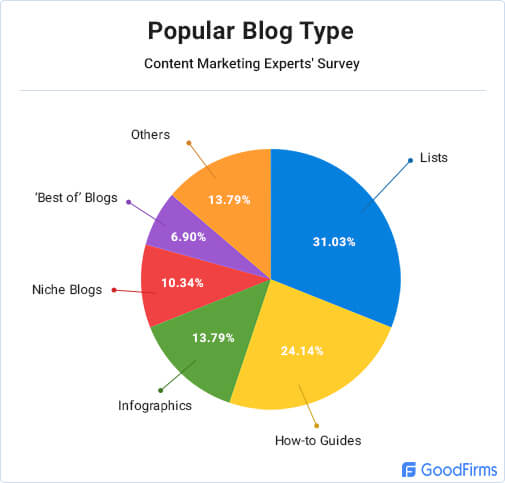
Not only does your title have this power to attract more clicks, but your meta description is also another form of advertising you can use to win over the users’ interest. Be creative and descriptive within your meta description and be sure to use your keywords within the 160 characters limit to present your case.
Repurpose Content
Make the most of the content you’ve published by creating different forms of it using multimedia. This strategy can work to improve traffic on underperforming posts that were once generating traffic and have since declined as well as posts that are popular and still generating traffic.
Everyone has a preference for how they choose to digest information, whether it be through video, audio, images or text. When you can supply different forms of the content your producing, you’re able to cater to a broader base of users and appeal to the different preferences each type of user might have.
For your stout followers and subscribers, this also provides a diverse way to present useful information in more engaging formats to keep them engaged and their interest piqued.
Update old content
New information is always being presented and we live in a fast-paced society where content can grow old and outdated fairly quickly. Search engines love fresh content and if you’ve got content that’s been sitting around and getting stale, an update can help revive your traffic.
If you’re in an industry that loves statistics, like the SEO world, having updated facts and stats is absolutely essential to providing value and being credible.
The competition for search visibility is also steadily increasing and it’s fairly common for websites to use content that ranks to make better versions of it on their own websites. If you’re not keeping up with the status quo in quality, your content will eventually slide right off the map.
Keep your content relevant and useful by updating periodically to see spikes in traffic.
Perform a technical Audit
This may be the most boring part of SEO, but it can also be the most important. If your website is not functioning properly, you might be giving up a lot of search visibility from a build-up of error codes or from pages that aren’t being indexed properly.
A technical audit will uncover many problems that can impact ranking. Use the search console to monitor your site on a regular basis. The first signs of trouble can usually be detected directly from the search console under the core web vitals tab.

Software such as Screaming Frog or Deepcrawl will also be helpful for identifying pages that have gone missing, that are indexed and that need attention.
Improve on-page optimization
It’s already been some time since Google has moved away from ranking by keywords and now ranks by keyword topic. This shift in how Google assesses your website has resulted in higher quality search results because top-ranking pages are optimized for the entire keyword topic as opposed to stuffing content with keywords.
As a result, if you rank #1 for your target keyword, you will also rank for a number of other keyword variations. Capitalize on the opportunity to improve your ranking by enhancing your on-page optimization for additional keywords.
By placing your keyword in the metadata of your content, you can instantly boost the on-page optimization. Look for opportunities in the title, body of content, and image alt tags. Refrain from changing the URL as this would be the equivalent of creating a brand-new page.
Be an active guest author
Although much has changed in the last year and a half, guest posting, when done correctly can be extremely beneficial for branding and traffic generation. Guest posting allows you to leverage other websites’ traffic by posting your content and linking it to your site.
The links can also improve your authority and ranking ability when they’re posted on topically relevant, high-authority websites.
Publish top-notch content to brand your company and entice users to click on your links. Be sure to include links to valuable resources that people will find useful and ideally present some business value to your company to convert visitors to clients.
Guest posting should be done with careful prospecting and in moderation unless you’re using nofollow links to your site. Google has been exceedingly vigilant in devaluing links from excessive link building by guest posting so you’ll need to strategize accordingly.
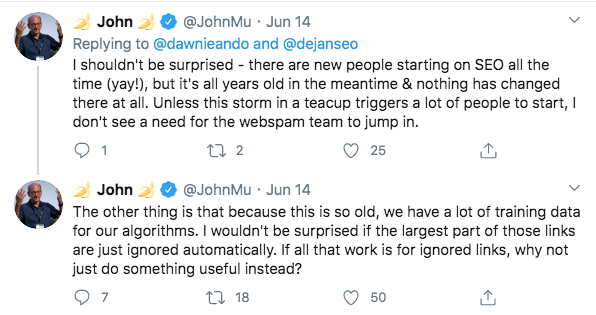
Merge Content that targets the same keyword
Google’s decision to allow the full transfer of authority through a 301 redirect makes merging content one of the options that can supercharge your traffic. Rather than have two mediocre blog posts on your website that don’t generate traffic, combine the two posts together for a bigger and better version.
Redirect the pages you delete to the new URL in order to combine the links and authority of the deleted page. This tells Google your content has moved from the detled URL to the new URL.This option should be exercised with pages that target the same keyword topic to get the full benefits of the merged content so the links pointing to those pages remain relevant.
Publish a press release
What better way to reach a broad audience and get published on some high authority websites than to release newsworthy information to the press about your company? A press release will put your content in front of a large number of journalists who regularly monitor press releases to write about something of interest to their audience.
As an old form of link building, you need to be wary of the links that are used in your press release. Most sites will only use nofollow links in your PR-which is a good thing because you don’t want Google to penalize you for unnatural link building. The bonus is when your story is syndicated on other websites, and many of those nofollow links will often become followed on other sites.
Not only do you receive referral traffic and branding but you also pick up a bunch of good backlinks that lead to an increase in search visibility and ranking.
Split testing
A/B testing can be one of the best ways to make decisions on content that provides higher conversion rates. Using software like Crazy Egg can help you conduct different spilt tests to identify what’s working best to generate more traffic to your website.
You can use split testing on your websites as well as in your email marketing campaigns.
Email marketing
This is one of the oldest forms of online marketing and still, today remains the most cost-effective method. Email marketing can get you an industry average of 3800% return on your investment and can instantly drive more traffic to your website at the click of a button.
Avoid spamming your email list with every update to your company and stick to sending fresh content according to the preferences of your audience. Every list should be segmented into each person’s preferences so you can personalize the type of content you send and get a positive response demonstrated by high CTRs to your website.
Page speed
The time it takes your pages to load can affect the number of visitors that make it your website. Studies show that for every second it takes, your site will lose visitors who become impatient and back out from your web page. The number of times a visitor lands on a page and backs out without clicking further is referred to as your bounce rate.

Improving page speed ensures more users stay on your page for more user engagement and ultimately more return visits.
Fast page speed is also considered a ranking factor. So if your website is ridiculously slow, you might be seeing some adverse effects in your ranking. In this situation, improving the speed at which your pages load will increase search visibility and drive more traffic to your website.
Host an Event
Hosting an event is a surefire way to garner more interest in your company and drive more traffic to your website. Whether it’s a live event or a webinar, posting the event on bulletin boards, on your blog and on social media will stir up a loyal and faithful audience as well as round up a few new people.
Analyze your website performance
When you want to see improvement in the performance of your website you need to be aware of the analytics it’s generating. Google provides two of the most valuable pieces of software for free to every website owner which is arguably the most comprehensive of all options.
Using Google Search Console is the equivalent of looking under the hood of your car when there’s a problem. The search console will report everything that going on in terms of functionality as well as performance. You can find errors, backlinks, impressions, clicks to your pages, penalties issued to your website and more.
Google Analytics is useful for running reports on user behaviour, traffic statistics, comparative analysis, goal conversions and customized reporting.
Analyzing the performance of your website can provide you with an accurate way of gauging the success of your current efforts and provide you insight into how to adjust and improve. Analytic reporting informs your keyword and content decisions for more successful campaigns.
Optimize for SERP features
Dozens of features appear on the first page of results in which you can optimize and capture more search visibility. The most obvious features include the featured snippet and PAA boxes.
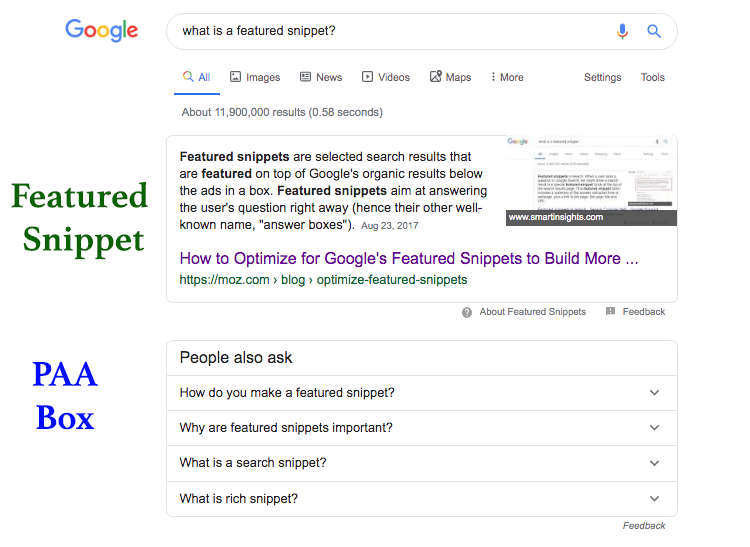
These options are the most common and therefore present more opportunity since a position can be won by optimizing existing content. The additional positions will contribute to higher click-through rates and drive more traffic to your pages.
Use structured data markup
Although implementing Schema and structured data markup does not directly affect your ranking, they can greatly affect the click-through rate your pages receive from the SERP. Using structured data markup can result in rich results that will enhance your search listing.
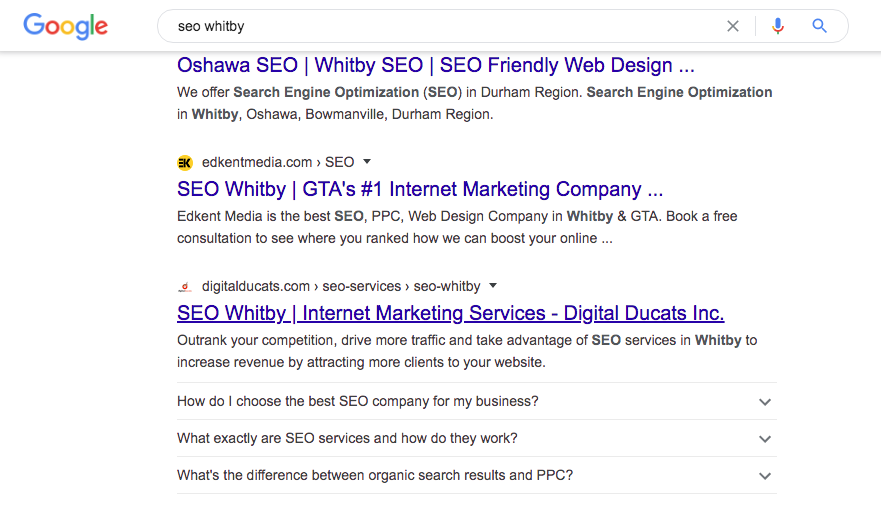
Some of the most common types of rich results you can influence are FAQ, Q & A, How-to, reviews, recipes and show times. The opportunity for rich results exists under specific conditions, one of them being that your page ranks on the first page of Google.
Invest in paid Ads
It may be obvious, but it needs to be mentioned as paid ads are an extremely viable way to drive more traffic to your website. The option for paid traffic exists on both search engines and social media.
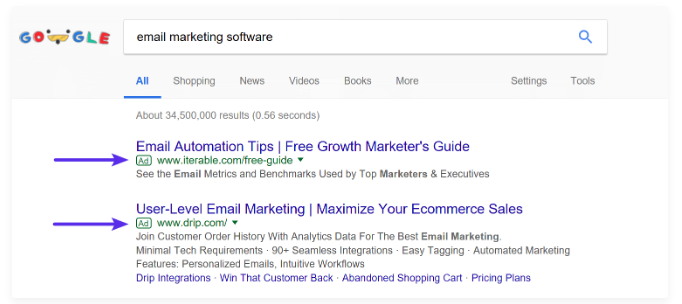
You can reduce the cost of this recurring expense by using retargeting ads where your ad continues to appear in front of those who have already visited your website. This form of advertising boosts your conversion rates since the concept is based on retargeting those who have shown interest in what your company offers.
Engage in social media marketing
Social websites are extremely valuable for increasing search visibility and getting your company in front of a larger audience. For B2C businesses social media sites like Pinterest and Instagram can supply massive sources of high converting traffic.
Did you know that 47% of “pinners” log on specifically to shop?
Effective social media marketing humanizes a business and makes them more relatable to the consumers. Avoid posting content like a robot and make sure you’re able to dedicate some time to interact with your followers.
Get social with your audience, after all, there’s a reason its called social media.
Leave more social share CTA’s
Include a call to action at the end of your posts to get more people sharing your content. People need to be told what to do in order for them to do what you want them to do. Sharing content may not be at the top of a persons list after reading something you’ve posted, but if you leave them a subtle reminder, you can improve your sharing statistics.
On facebook, if you leave CTA’s on your page you can increase your click-through rate by 285%.
The larger the audience you have, the more people will click on your site. Always leave a CTA at the end of your posts to maximize the number of people that view your content.
Form a P.I.N. (Personal Influencer Network)
Do you see many of the same names and faces in your niche? Reach out those who are in a position to amplify your content and come to an agreement about how you can support each other’s efforts.
If you’re actively guest posting it would be ideal to reach out to authors and arrange a link for link agreement. For every article you publish, you can include a link to their site and they can do the same for you.
With enough people in your P.I.N., every article you publish has an exponential impact as it becomes worth as many links as the number of people in your P.I.N. that you’ve linked out to in each article.
Establish a local SEO strategy
If you’re a brick-and-mortar business you can leverage the traffic you receive by establishing a local SEO strategy to drive traffic from your specific location. One of the best ways to rank on the first page of Google is to get your website on a Google property.
List your company in Google My Business to get your website in front of people looking for local businesses like yours. Local traffic tends to have a higher urgency for making a purchase and visitors are typically in the later stages of the buyer journey. Being in the local pack and showing up for localized search results can drive more traffic to your website and increase your bottom line significantly.
YouTube marketing
Video has exploded in popularity. It’s nothing new to business owners considering 81% use video as a marketing tool. The widespread use of video is up 18% from last year and still continues to grow.
Engagement statistics such as time spent on a page and bounce rate improve with the addition of a video. After watching branded social videos, 64% of people will make a purchase. Social shares are higher with video and 6 out of 10 consider video the preferred method of learning.
As mentioned above, some of the best ways to rank on Google is to be on Google-owned properties. The number of searches that click on a Google property has officially passed the 50% mark forming the proverbial walled garden.
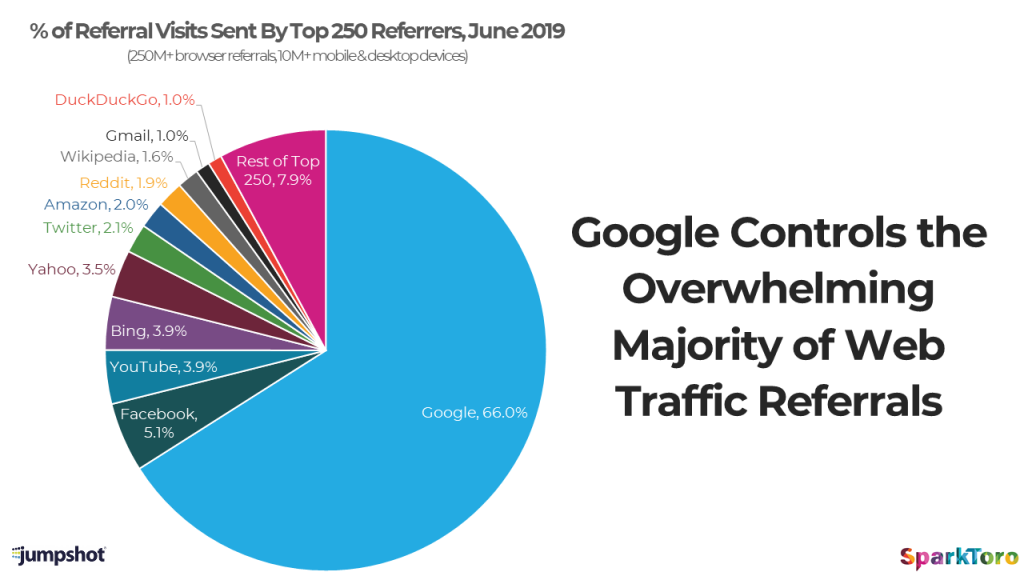
Use this to your advantage by leveraging the second most popular website in the world; YouTube.
YouTube videos account for over 90% of the videos that rank in Google search results. If you’re considering publishing a video, it wouldn’t make sense to do it anywhere else.
You don’t need to rank on Google to drive more traffic. YouTube has become its own search engine and can generate thousands of views from a successful video. Include a link to your site in the video description to refer your viewers to your website.
Participate in a podcast
Video is not the only form of media that’s been gaining popularity. Podcasts have exploded over the last few years creating more opportunities for your message to be heard.
Creating your own series requires a lot of time and resources, which can definitely pay off in the long run, however, you can also ask to be a guest on someone else’s podcast. The host of the show should have no problem linking to your site from the podcast description for some sweet referral traffic to your website.
Even if they don’t, as long as they have a decent subscribership, being featured as a guest is excellent branding and will stir up some interest from an untapped audience. Podcasts are continuing to grow which is an opportunity in itself to capitalize on getting more visitors to your website.
Optimize your Images
A potentially underrated form of driving traffic to your site is through image optimization. Be sure to optimize your images with the keyword in the filename and alt tags. Include a descriptive title and captions whenever the opportunity presents itself.
The more information you give to search engines, the more they have to associate your image in keyword-related searches.
It’s not just the keyword optimization that will get your image to the top of the results but also the number of links it has pointing to it. Create visually appealing images (with data when applicable) and ask people to give you proper attribution with a link.
Organize your content topically
Increase the search visibility of your website by organizing your content topically. If you’ve been doing your homework, you would know that Google is ranking pages based on keyword topics rather than keywords themselves. With a topical organization, you can add the depth of topic your site demonstrates and drive more traffic to your website through increased search engine rankings.

Create topic clusters to emphasize the most important keyword topics of your website. There are pillared content and clustered content that make up a topic cluster. The pillared content is the pages that represent the major keyword topics of your site. They typically cover your topic in breadth and not depth.
The clustered content is smaller more narrowly focused articles that solve specific problems or answer specific questions. For this reason, the clustered content typically targets long-tail keywords in order to rank highly and drive traffic from a highly engaged audience.
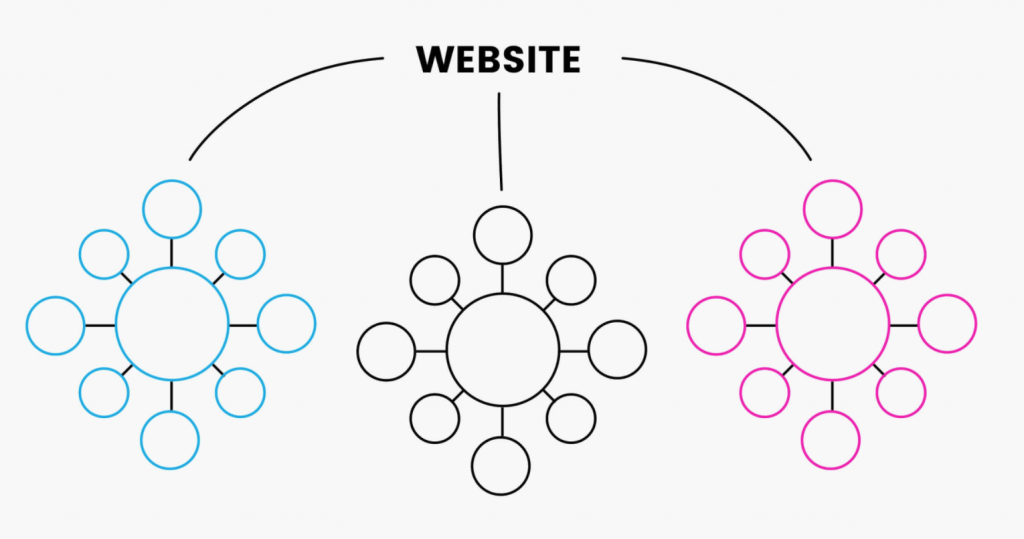
The topical organization of your site makes it clear what the major keyword topics are, which appeals to search engines. It also becomes clear for users to identify the most important topics on your website and get a sense of the depth of your expertise.
The pillar page model establishes credibility, authority, expertise and trust in its niche whic are positive ranking signals that influence more search result appearances for keyword related searches.
Internal linking strategy
The internal linking strategy you implement on your site has a direct impact on your pages performance in the search results. Internal links are also used to form topic clusters and increase the internal click-through rate so users can navigate to related pages with ease.
Use descriptive anchor text to enhance the on-page optimization for individual pages. Sometimes building more internal links to a page can improve ranking with the improved optimization.
Link to related content to guide visitors to pages that are within the same topic cluster. Clustered content always links back to the pillared content in order to build the authority of the keyword topic, improve click-through and drive more traffic to your website through increased ranking ability.
Use SEO tools and software
There are a number of tools and software that allow you to multiply the effectiveness of your efforts. Using tools can give you the insight needed to make better decisions for more calculated success.
Use analytical SEO software to find backlinks and traffic sources of your competition. Why should they keep all their juicy sources of traffic to themselves? Ahrefs, Moz and SEMRush are all versatile tools that can give you a fast and sure-fire way to ramp up your efforts on finding the best sources for quality visitors.
For instance, you can see the exact keywords make up a website’s organic traffic using SEMRush.
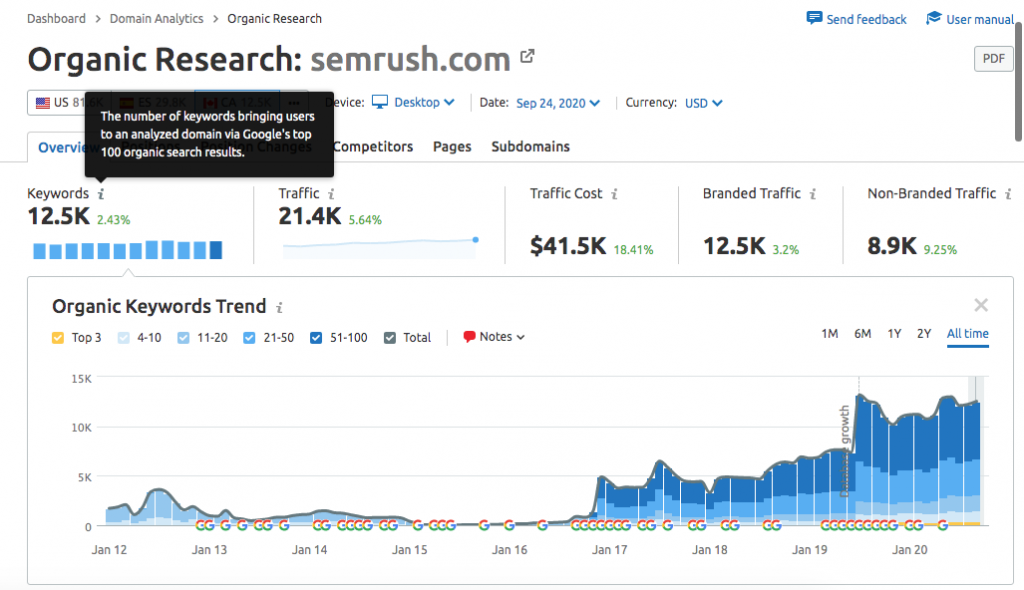
You can also discover popular content topics by using Buzzsumo. Type in the keywords of the content you want to see being shared the most so you can publish content that people have the most current interest in reading and sharing.
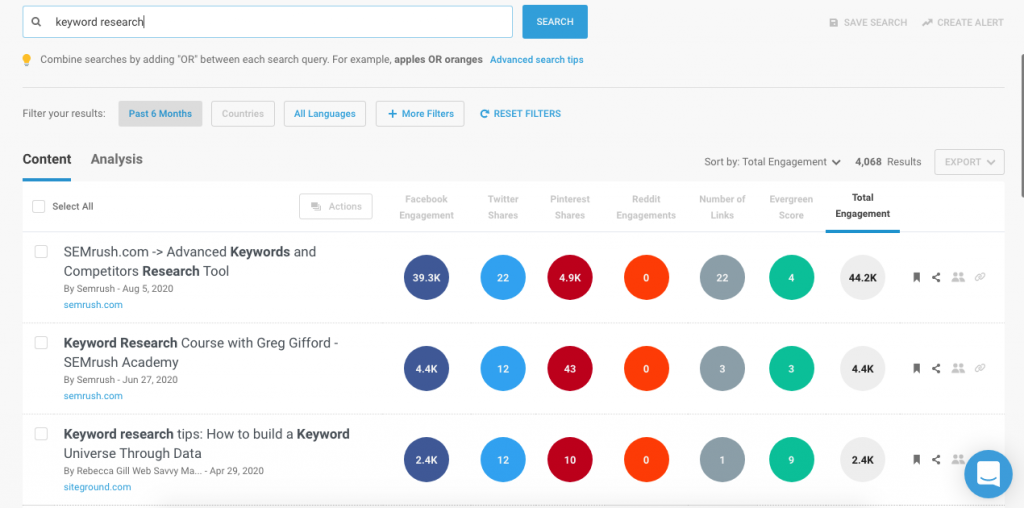
Stay on the cutting edge of your industry by making use of the tools that give you the ability to collect valuable data about your audience.
Develop a free tool or app
If you have the resources, develop a tool or app that would make life easier for your potential clients. Many businesses drive thousands of visitors to their site just to use a tool they offer. For example, Ahrefs offers users its tool called Free Backlink Checker. This page alone gets thousands of visitors from organic traffic.
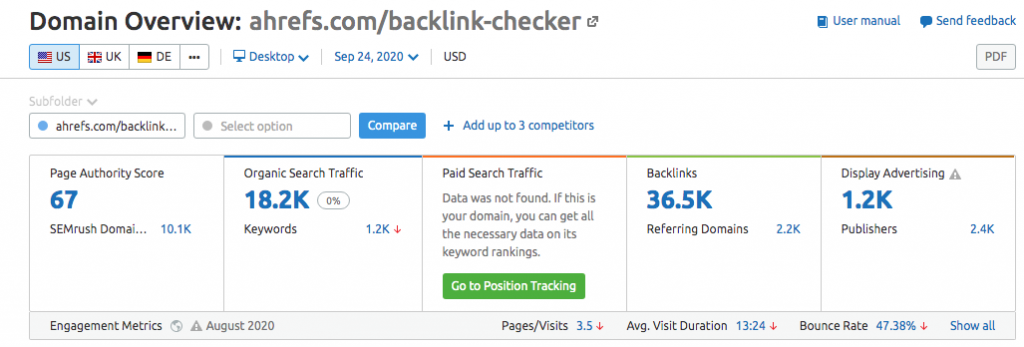
A few other examples are Ubersuggest, Answer The Public, GTMetrix and the list continues. Even Moz and SEMRush have free versions of their software to get more people familiar with their company. This may be something that is out of your scope but you should know that the potential to drive traffic to your website exists when you can offer a free tool or app.
Publish evergreen content
Rather than publishing articles on your blog that lose relevance or value overtime, publish evergreen articles that won’t lose value in the foreseeable future. News updates and current events have a short lifespan and become useless for driving traffic and acquiring backlinks. Evergreen content provides both for your website.
The bottom line for producing evergreen content is that you’re able to publish something that can be considered a link-worthy resource. This means that over the life of your post, it continues to collect backlinks, drive traffic and encourage return visits because of its inherent value as a resource.
Evergreen content typically takes the form of long-form content, such as ultimate guides, listicles, case studies, reviews, white papers, interviews, expert roundups, infographics, Q & A pages and more.
Answer questions on forums
This method of traffic generation was a widely practiced link building tactic before Google put a hex on the links that are accumulated from forums. For this reason, many people shy away from using forums for traffic regardless of the fact that it can result in streams of targeted visitors to your website.
Being able to answer people’s questions effectively and thoroughly creates trust and is a way to showcase your knowledge in your field of expertise. The trick is to answer questions on forums that are specialized to your industry as well as drive a decent amount of traffic. Quora is one question and answer site that qualifies in both categories.
Quora gets over 300 million users on its site every month and you can find people asking questions in almost every niche imaginable. You are permitted to leave links to your site within your answers and can introduce people to your business through the content you produce as answers to their questions.
Comment on high-value industry articles
If you’re not reading the biggest and the best blog sites in your industry, you should be. Not only does reading what the top websites publish to keep you current on what’s popular and trending but it also gives you a chance to send visitors from those sites to yours through some well-placed comments.
It’s true, commenting on guest posts and leaving your link has gotten a bad rep, but remember that’s because people were abusing it. There’s nothing wrong with leaving a link to your site on an insightful comment when it makes sense to do so.
Get your company and website in front of an audience that is obviously interested in the content your producing. The search visibility on some of the top sites is insane and a popular article could receive hundreds of thousands of views over time.
Leave your two cents about that article and if people like your stance, you can bet they’ll click on a link to hear some more of what you’ve got to say.
Post to content aggregators
The best thing about online strategies is that they have the ability to go viral. Submit your content to the aggregators who have the ability to get it in front of thousands of people. Many websites will syndicate the content they find which can lead to some pretty good backlinks.
What’s more, is you can get featured in Google News in related search results if your content gets a good response.
Medium has the potential to get your content in front of a huge audience because of the way their algorithm works. If your content starts getting a lot of views and social engagement, you’ll see it being shown to more people on the Medium platform.
Neil Patel claims his first big break came when an article of his was featured on Techcrunch. Leverage the most popular sites that allow you the greatest potential of going viral.
Increase traffic with the methods that are right for your business
Every industry and niche has proven methods for increasing the traffic to your website. For example, if you’re in a B2B service industry, you wouldn’t get as much from relevant traffic from an Instagram campaign as you would from publishing and ranking blog content.
There’s no right or wrong way to get people on your website but you can find the best ways by learning from those who are killing it in your field.
Analyze the efforts of your own campaigns in order to continue to learn and grow from what works best so you can scale up in those areas and continue to drive more traffic to your site on a regular basis.
Recognized as a Game Changer in the SEO Industry by Clutch
The digital marketing industry has been one of the fastest-growing industries in the world today. PPC, SMM, and SEO have been at the forefront of this digital revolution. SEO has been one of the, if not the most, popular among the bunch. The first result in search engines has been influential in today’s digital age and SEO can help you reach this coveted spot. At Digital Ducats Inc., we help businesses and companies as they try and start their own SEO journey.
Founded in 2015, Digital Ducats has been specializing in providing high-quality digital marketing and search engine optimization services to small to medium-sized businesses. Our goal is always to help our clients transform their websites into lead-generating assets. In today’s digital landscape, having a capable SEO partner can make or break your digital marketing efforts.
For more than 6 years now, our team has been working with amazing companies in different industries. We’ve managed to receive amazing awards and accolades from the industry. Today, we are looking to receive another one from Clutch!
Clutch, for those that don’t know, is an established platform in the heart of Washington, DC, committed to helping small, mid-market, and enterprise businesses identify and connect with the service providers they need to achieve their goals.
Clutch states that our company was one of the game-changers in the SEO industry in Canada! They mentioned that we were able to deliver impeccable services and solutions that helped our clients in achieving their goals. This is a huge honor for us! We couldn’t imagine ourselves being in this position without the help of our amazing team. Their passion and dedication are what led us to win this amazing award.

Of course, this award is also thanks to our amazing client and their incredible support! Here are some of the amazing feedback and reviews we’ve received from you guys throughout the years:
“They stay on their game, and they’re responsive. I like that they’ve maintained their level of customer service, even though we’ve been working with them for a while.“ John Ferrigamo, Owner of John Ferrigamo Custom Suits.
“There was a personal connection, and they cared about my business success.” Paula Loh, Owner & President of Surf’s Up! Laundry & Dry Cleaning.
Let’s turn your dreams into reality! Get in touch with our team today and let us know how we can help you.
How To Choose A Good Domain Name For Your Business
Choosing a domain name may seem like the easiest part of your journey, make no mistake, the selection and securing process are layered with pitfalls that can affect the future of your business. There is literally a list of considerations to ponder before deciding (hence the existence of this article!). Learn how to choose a good domain name for your business and you will be one step closer to experiencing success on the search engine result page.
Approximately 37% of all domains are .com but does that make it the right choice for you? Here are a few things to consider when you’re both choosing your domain and setting it up with your registrar.
Choose a name that’s easy to remember
Try to pick a name that best represents your brand but is simple to remember. It’s a great name when people can simply type it in and go directly to your website. It helps when the domain has something to do with the product or service you provide.
More often than not, a shorter domain is better.
One or two words are ideal.
Three words are acceptable.
Four words are overkill.
Using keywords vs. a brand name
Consider the SEO strategy when you’re deciding on the domain name of your website. If you’re in an intensely competitive field, you may want to avoid choosing the name of your business as the domain. Without a big budget, it may be difficult to rank your website for a keyword(s) that could literally be worth hundreds of thousands a year.
For example, to rank a lawyer’s website for the top keywords in a big city it would be advantageous to use big keywords that get thousands of searches a month. Look at the search result page for DUI lawyers Toronto.
Two of the top five results include the keyword (or partial-which works well too) within the domain name. The third domain at the bottom does not have an exact match but Google recognizes the search intent and has matched this domain to the keyword search.
Note that none of these domain names mentioned is NOT the name of their law firm.
Avoid hyphens & stop words
Stay away from using hyphens and stop words that could lead to confusion or mistakenly landing on someone else’s website. Stop words are words that separate keywords but are generally filtered out by search engines.
For example, plumbing-contractor.com is actually a pretty good domain name however, it would be better to get plumbingcontractordallas.com because
a) Plumbing is a service industry that’s limited to specific service areas (unless you’re a national franchise). and
b) You can still rank for plumbing contractor AND people won’t land on someone else’s site if they forget the hyphen.
There is SEO value in incorporating hyphens when you’re competing for a competitive keyword but it’s better to avoid it whenever possible.
Stop-words or adding letters and numbers to your domain is an SEO technique that can be useful. The problem is it doesn’t look very professional. Depending on the purpose of your site, consider whether you business is best represented by a domain like this:

Choose a top-level domain (TLD)
TLDs are the domain extensions that are widely recognized and considered at the top of the list of options. These used to be the only TLDs during the first days of the internet:
- .com
- .net
- .org
- .int
- .gov
- .edu
- .mil
Each of these TLDs represents a category that the content of the website fell under. Now there are over 1000 new extensions to choose from including country code TLDs. Here are just a few examples of what you may have seen if you’ve been shopping:
- .digital
- .agency
- .club
- .today
- .solutions
- .co
- .shop
- .biz
- .pet
- .blog
- .io
- .coffee
- .online
- .me
- .xyz
- .live
- .co
- .store
So how do you choose a good domain name for your business website? In most cases, the best option is to go with a .com since people are 3.8 times more likely to assume that the end of a domain name ends in .com.
This is good for businesses operating in the United States and who target a global audience.
If your business only provides services or products within your country, then using a ccTLD (cc=country code) is the best option. Search engines recognize ccTLDs as local businesses and will give some preference to websites in a local search result within your country.
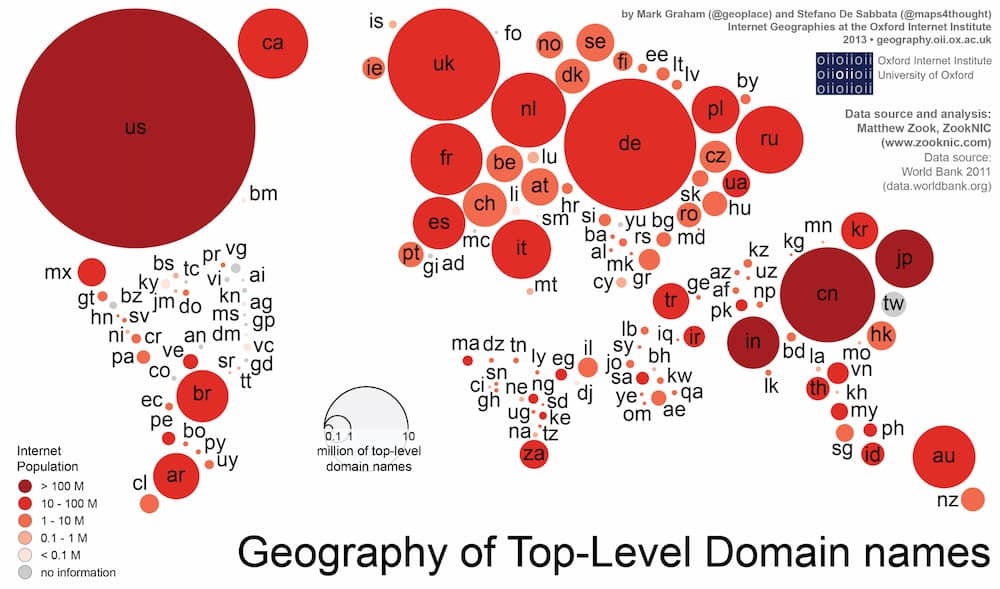
You can go outside the norm and get creative with your gTLD (g=generic) when you feel there is a good way to create a unique and memorable name. If you’re selling coffee beans, it may be advantageous in the long run to register www.beans.coffee as your domain name.
Secure your domain to avoid disaster
When you choose a good domain for your business website, you’re laying the first level of foundation for your business website. You will undoubtedly put endless hours of work (or money) into developing it. Building a business isn’t a short-term project either. Stop for a second to think of what life would be like if, after 6 years of pouring blood, sweat, and tears into your site, it suddenly disappeared from your account.
No words can describe the horror of this situation. It is a complete nightmare to live through. Believe it or not, this happens to people more times than you ever thought was possible.
Here are a few tips to make sure this never happens to you.
Switch your domain to auto-renew
Sounds simple enough right? When the time comes for your domain to renew, the payment is automatically made, and you’re all set to go. Most people lose their domain because they let it expire. Think your domain is safe now? Nope! There’s more to this story.
Enter a secondary payment method
Adding a secondary method of payment creates a failsafe for things that can go wrong. Perhaps you renewed your credit card and the number changed. Maybe your card was at the threshold and the payment didn’t go through. Whatever you think is impossible to happen can eventually find a way to happen.
Enter a secondary email address
Normally when your domain is set to renew (or expire) you get multiple email notifications that count down the days to give you time to pay. It’s not unheard of for people to switch email addresses and forget to update their address with their domain registrar.
Changing the admin@yourdomain.com address to info@yourdomain.com might be the dagger that kills your communication method between you and your registrar. If they can’t tell you your domain is expiring or your payment hasn’t gone through, you’ll lose your domain.
Always maintain ownership of your domain
Never allow an agency to purchase your domain for you. If the domain is in their account, they literally own the domain. It’s like buying a car in someone else’s name who also holds on to the pink slips. If there is a falling out and they want to hold your domain hostage, there’s not much you can do about it.
Delegate access rather than divulge login info
You can delegate access to employees and third-party companies who may need to point to nameservers, work on email accounts, or whatever. This way they can still access your account to do what they need to do but do not have the authority to transfer domains out of your account.
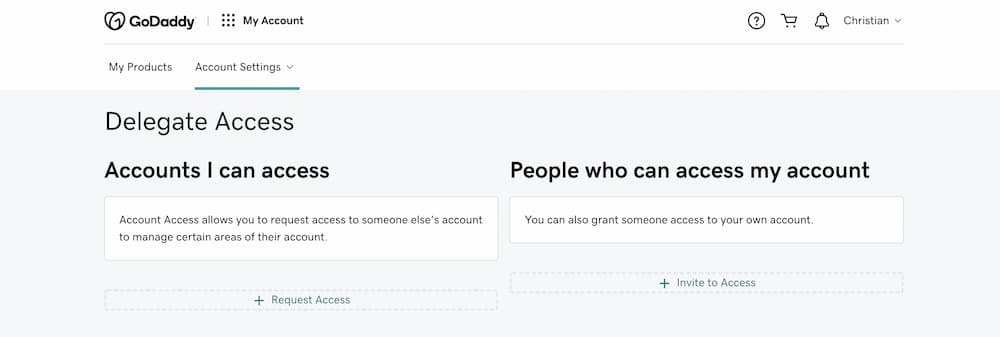
Lock your domain
You should have the option to lock your domain to prevent transfers to another registrar. It should be as simple as clicking a button or editing settings.
Enable two-step verification
Two-step verification is another way to control who has access to your registrar account. Every time someone (including yourself) tries to log in you will be prompted to enter a code. This prompt is usually sent to you via text, phone call, or email depending on your setup.
The shortcut to quick rankings
It needs to be mentioned that one of the quickest ways to achieve instant traffic and potentially high ranking in search engines is to buy a domain that has been around for a few years. One of Google’s ranking factors is trust. Aged domains are like fine wine. If they haven’t changed hands extensively, they get better with age.
That being said, this tactic is a well-known SEO tactic where we redirect the aged domain to a target domain that we want to rank higher. So you can use the domain itself (if there are no copyright infringements OR if it’s a generic name created for SEO you can use it for your own business. For example, https://seoallentx.com would be the perfect domain name if you wanted to rank for SEO Allen TX on Google.
Purchase from auctions and expired domain sites
You can find domains available for purchase on websites like Flippa.com and expireddomains.net. Afternic is an afterthought, so if you can avoid them-do it (I have personal grievances with this GoDaddy-owned lump of crap).
Businesses that are closing
If you know of any businesses that are scheduled to close their doors they could be in the market for selling their domain. Try to tender and offer personally before they list their domain on an auction site or it could be months before they actually sell.
Love the domain name you choose
At the end of the day, love the domain name you choose. If you’re going about your decision in the right way, you’re probably going to have that domain for a long time. You’re going to need to look at it every day and even if it’s a brand new domain it will gain value overtime just like your business.
Marketing Funnels: Get More From Your Website Traffic
Marketing funnels are a solution to get the most from the volume of traffic that lands on your website. Search engine optimization drives traffic that attracts visitors at various stages in the buyer cycle. Many visitors may not be ready to purchase immediately and therefore require more information and nurturing to convert them into clients. Marketing funnels provide a system for moving your website visitors closer to purchase with your company.
Create content to address The Buyer’s Journey
Generally, the buyer’s journey is divided into three main categories; Awareness, Consideration, and Decision.
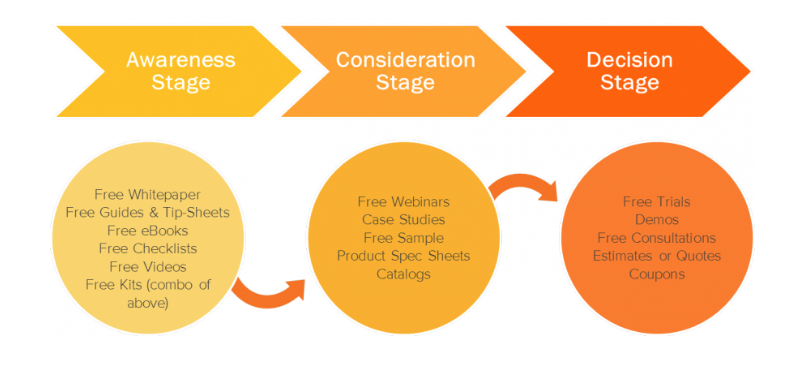
The awareness stage
At the awareness stage, visitors are just learning about the problems they have and what the potential solutions are for solving those problems. This is where they first may encounter your company through a blog post that is aimed at explaining the basics of your niche.
An example of a blog post at the awareness stage of a person searching for SEO would be How do I make my website number one on Google?
The answer to this question is search engine optimization but as far as the user goes, they may not realize what this is until they read the article. Articles such as this would be aimed at expanding the audience in which your content targets.
The content that you publish at this level in your marketing funnels are considered TOFU content (Top Of The Funnel content). Due to the broad nature of the topics, the audience is the largest at this stage of the buyer journey and therefore will also have the greatest drop-off in interest (hence, the funnel concept).
Getting people to your site is only one aspect of your growth efforts. When you’ve effectively captured the interest of a new website visitor, the next step is to move them to the consideration stage of the buyer’s journey.
The consideration stage
When a potential client is in the consideration stage, they already aware of their problem and require more information to guide them to a purchase decision.
For example, if you’re searching for an SEO company, you may want to know about the benefits of SEO to consider whether it’s a good fit for your business. Reading about what SEO can do for your company would certainly give you more incentive to move forward with your decision.
Content that provides incentives, facts, and social proof can be considered MOFU content (Middle Of The Funnel Content). Essentially this is content that moves a potential buyer to the decision-making stage.
The decision stage
The last segment of the buyer journey is called the decision stage. It’s where the buyer is past the research stage and is ready to purchase. At this point in marketing funnels, the content that is needed is called BOFU content (Bottom Of The Funnel content).
Examples of content that convinces a buyer to purchase from your company can be landing pages, case studies, service pages, product pages, and squeeze pages. Essentially, any page that is geared towards convincing the visitor to make a purchase is bottom-of-the-funnel content.
The ultimate goal for your website is to generate revenue. An effective marketing funnel means all content on your site should in some way be leading your website visitors to a specific action that moves them closer to purchasing. That means moving visitors to content further down the funnel through a specific call to action (read more, download, opt-in, or purchase).
Customize your sales funnels
While the buyer journey is a good concept as a basic model, you can optimize your marketing funnel to be more effective by adding detail to each stage. The level of detail is based on the type of clients you deal with regularly.
In many industries, the process for going from learning about a product (or brand), comparing options, and purchasing a product may be completed in one session. This means that you can create content that addresses each of these stages all on one page. Many landing pages for retail products are published to do exactly that.
In this example, LinkedIn is offering a free credit for advertising as well as a strategy guide in exchange for an email address. This is an excellent example of how to get prospects to move from consideration to decision with an incentive as well as free trial to see how effective the product is firsthand.
In other industries, the lead-time for selling B2B services or big-ticket items is often much longer and requires more nurturing during the research stage. For these types of clients, your marketing funnel would need to be more detailed and include more micro-stages to move them along.
5 reasons to consider email marketing within your sales funnel
As mentioned earlier, SEO brings many different types of visitors to your door. No matter what stage they are at in the buyer journey, it’s important to identify what your potential clients need to give them enough confidence to making an informed decision. Email marketing is an effective solution for layering content in your marketing funnels and getting the most out of your website traffic for the following reasons:
Build relationships
When you capture an email address from an interested website visitor, it provides you with a way to maintain contact and to continue to move that visitor further within your marketing funnel. Email marketing allows you to learn more about your audience and respond with more content that they’re interested in learning about.
Personalization is high on the list for many companies now and what better way to build a relationship than with content that is specifically tailored to your audience? List segmentation, surveys and questionnaires can help you optimize your campaign and get insights into your audience.
Build confidence in your brand
An email marketing system provides your company with a way to continue to help your potential buyer find more what they’re looking for as well as present the reasons why your company is the best option for what they need.
If your product or service requires a longer lead-time before closing a sale because there’s more research involved before making a decision, your sales funnel would include sending informational emails before trying to close a prospect. Structure your campaign to teach your prospect more about the inner workings of your niche to build confidence in your brand.
Increase conversions
The ultimate goal of digital marketing is to generate more revenue. When you consistently remind prospects about your company and the products you offer, you increase the likelihood of acquiring them as customers.
An email campaign can increase conversions by getting your product in front of more interested website visitors (subscribers) more times as opposed to losing them forever when they leave your website.
Increase repeat sales revenue
Once you sell to a client, it doesn’t mean the end of your relationship. Happy clients will often become repeat customers. Use your email list to notify new and existing clients of promotions and sales. An email list can increase the number of sales you make for seasonal specials as well as the regular flow of prospects that go through your marketing funnel.
Promote brand advocacy
There’s no better form of marketing than word-of-mouth marketing. When you have happy customers, they will recommend your services and products and are 75% more likely to become advocates. It’s as simple as that. Brand advocacy adds another form of advertising that is achieved by incorporating content creation for existing clients.
Examples of content that is geared towards brand advocacy can be follow-up emails about the service they received, surveys, giveaways, and contests. Maximize the lifetime value of a client by learning more about their preferences and making changes to accommodate them as best you can.
Optimize your conversions with an effective marketing funnel
The traffic your website generates will always consist of visitors at different stages in the buyer journey. Identify what content they’re looking for and what they need to move forward in the buyer cycle to facilitate more conversions.
Develop effective marketing funnels on your website to create the perfect tool for lead generation. Your website should be your number one salesperson and contribute to your revenue, leads and new clients daily.
Need help getting more visitors to your website? Contact us today for a discovery meeting and learn about the best available options to grow your business to the next level. For a free website analysis fill out the form below.
Clutch Names Digital Ducats Inc. as Canada’s Top SEO Freelancer
Search engine optimization isn’t just for major enterprises and big businesses. In fact, SEO is also important for small businesses and startups. It has multiple advantages and benefits such as being able to track customer behaviour, organic traffic generation, and even business guidance. As a top SEO freelancer, we’re proud to provide our clients with these services at an exceptional level.
Here in Digital Ducats Inc., we specialize in helping small to medium-sized businesses thrive on the world wide web. Since 2015, our team has been driven to provide impeccable service and outstanding ROI for our clients.
For us, our clients’ satisfaction and positive feedback are what matters the most. We don’t like to think like each project is just another number, rather an important partnership and collaboration. This is why we are genuinely honored to announce that we have been chosen for a Clutch 2021 award.
For those who don’t know, Clutch is an established market research firm from Washington, DC. Their expert team takes thousands of clients’ feedback to conduct market research. They rank companies to help business owners find the right agency to work with.
This year, Digital Ducats Inc. was chosen as the top freelancer SEO agency in Canada. To express our gratitude, here are a few words from our chief executive officer, Christian Carere:
“I’m absolutely thrilled to be chosen as one of the leading SEO companies in Toronto and look forward to another year of successful triumphs for us and our clients.”
Digital Ducats Inc. ranks third among the country’s best SEO freelancers according to Clutch’s Leaders Matrix.
Our whole team would like to extend our gratitude to our clients, especially those who left us a review on our Clutch profile. For reference, here are some quotes from our their reviews:
“Within two weeks, I started getting traffic and had my first customer. It started to grow from there. Now I have a ton of repeat retail customers.
Our site was initially on the first page of search results, but it was result number 5 or 6. He mentioned if I wanted to be up top in that area, I’d have to do more work. I plan on working with them again in January.” — Owner, ACS Dent Repair
“If I have an idea of what we could be doing better or something that could help Christian do his job better, we definitely communicate about that on an ongoing basis. That’s really the difference between Christian and other companies that we’ve worked with in the past.” — Co-Owner, Canadian Home Leisure
Do you have a project in mind? Please leave us a message and let us know how we can help you.
7 Advanced SEO Strategies To Grow Website Traffic
Everyone has a website these days, but not everyone is ranking on the first page. How do you send droves of traffic to your website when thousands of others are competing for the same keywords? Here are some well-known advanced SEO strategies that are proven to increase website traffic for more leads and new clients.
- Repurpose content
- Re-evaluate your keyword strategy
- Build high-quality links
- Update, Merge, Delete
- Invest in video marketing
- Optimize, optimize, optimize…
- Optimize for local traffic
Repurpose content
Choose one of your top-performing pages and repurpose the content into another form to take advantage of existing interest and the traffic already flowing to the page.
What does this mean exactly?
Let’s say you have a blog post on 7Advances SEO Strategies that get a high volume of search traffic. Use the content from that post and turn it into a video, podcast, infographic, slideshow or anything you believe will get a good response from your audience.
Why does repurposing content generate more traffic?
Using an alternative form of content gives you another way to deliver your content. Users all have different preferences on how they choose to consume content and so by providing multiple versions you open up new channels of interest.
Those that may have skipped through or skipped your blog post entirely may choose to watch a video or listen to an audio version.
The bonus of repurposing content that it’s not as hard to do as producing content from scratch. A good deal of the work is already done since you have a finished product. The content is already there it’s just a matter of putting it together in a way that users can consume.
Repurpose your blog post into a new infographic
Turning a blog post into an infographic is a popular method of repurposing content. Visualized data has a much higher retention rate for people because it is a combination of images and facts. Images help visitors retain the most important points of a blog post.
Step one: The first step is to determine your key data points.
What do you want readers to remember when they see your blog post? This will form the skeleton of your infographic.
Step two: Organize your infographic with sections and headers.
The key to a good looking infographic is to make it look extremely organized. If everything is balanced and aesthetical it will make more sense to users when they read through the content.
Step three: Keep your text brief and to the point.
The idea behind making the infographic is to give your audience the most important data points. Don’t try to transpose the entire blog post onto your image. Otherwise, they could just read the blog post.
Step four: Include notes for the designers.
Be as descriptive as possible when making notes for the designers. You want your ideas to materialize as close to your vision as possible. Tell designers exactly what to do when it comes to branding, colours and images.
Here is an infographic from Venngage that walks you through these exact steps:
Publish a video
Hey, have you heard about that new website called YouTube?! It should be obvious by now that if you’re going to publish a video, you’ll want to do it on YouTube. Not only is it the second-largest search engine in the world, but also, videos rank on Google all the time for high volume keywords.
(Click here to learn about video trends in 2021)
Add YouTube traffic to your monthly search volume
Drive traffic from both Google and YouTube by publishing a video optimized for an important keyword that will drive traffic. YouTube is not as competitive as Google when it comes to ranking for keywords, which is something, you can capitalize on.
If you’re shy about being on camera, use the images from your infographic to make a video/infographic. You’ll need to be the narrator and be super engaging if you’re not going to show your face on the video.
Tips for optimizing your video
Make sure your main keyword is in the title, filename and tags. Take your video optimization to the next level by including a keyword-rich video transcript in the description. Add Chapters within your description to break up your video into segments. Take note of the top ranking videos and duplicate the tags they use since it also plays a big role in how YouTube sees your video.
Keep in mind that if people get bored and leave your video before it finishes, it will sink your YouTube ranking. Make sure there are no flat and boring segments. If you can’t help but be super boring then make your videos into short clips. Engagement is the key here.
Publish a slideshow
If you’re going to go as far as publishing a video, you can easily import it to Slideshare to publish a slideshow. That’s not the only option for creating a slideshow. PowerPoint presentations convert perfectly and you can always make a slideshow from scratch.
Slideshows allow you to separate your content from the masses by providing a form of multimedia that isn’t as common as infographics and videos. They require user interaction which entices visitors to stay on your page longer and boosts engagement statistics.
Slideshare also has an average of about 80 million unique visitors a month with approximately 38 million registered users. This option can serve as an excellent source of traffic for B2B marketing.
Create bite-sized information for social media marketing
Divide your blog post into the most important points and post pieces of it on your social media one piece at a time. This can give your posts a longer lifespan for capturing interest and driving traffic to the blog post on your website. Oberlo does this really well with its infographics like this stat that was cut from their social media marketing infographic.
Rather than one post of your entire blog article, you can use multiple posts that are more like teasers to get people to visit your page to read the whole thing. Not to sound like a broken record, but infographics are perfect for this type of social media marketing.
If you’ve turned your blog post into an infographic already you can use each segment as a social media post. Each post will be one of the main data points you’ve chosen for your infographic. With this already done you already have images and the most important messages ready to post.
Save time, resources and boost traffic with repurposed content
If you’re producing content regularly, repurposing content should be a regular part of your routine. It’s not easy to go through years of producing content regularly without experiencing overlap in topic and ideation.
Why not improve the quality of existing content and expand the reach it has by using multiple sources of traffic?
Re-evaluate your keyword strategy
There’s a common misconception that your keyword strategy is a “one and done” type of task. This couldn’t be further from the truth. Your keyword strategy should be re-evaluated periodically to expand on areas that are working to improve your bottom line.
Re-optimize for keyword variations
If there are keywords that are bringing in high converting visitors, you’ll need to pay closer attention to those phrases to build more content surrounding those issues and topics.
Why settle for one high-converting keyword when you can optimize for four or five similar phrases that work to produce the same results? There are many cases where you can get the same page to rank for more keyword variations by making small adjustments to optimize the page. To capitalize on those opportunities, you have to be aware of the keywords that are working to boost your business.
Publish relevant content
The content you publish is heavily influenced by the topics that are important to your audience as well as weighing in the business value the target keywords represent to your company. What you decided were the most popular keywords 5 years ago, heck, even one year ago may have changed in priority and almost most definitely in volume.
It’s important to stay updated on what is being searched the most to continue producing relevant content for your audience. Refreshing your keyword strategy is a way to ensure you’re up to date and delivering fresh and relevant content that drives traffic.
Steal ideas from your competition
An effective keyword strategy is not complete without doing a competitive analysis. Just as you may review popular terms being searched by your audience, you also want to check in on your competition to what terms they’re driving traffic from as well.
You can get ideas by running a competing URL through analytic software to see the both paid and organic traffic that is flowing through their site.
If they’re executing an optimized PPC campaign, then paid traffic can speak volumes about what terms are making money for their company. Why else would they be paying for traffic if they weren’t making money from it?
The organic traffic that’s being driven is an indication of the content that’s being produced. If there are keywords they rank for that you don’t, take a closer look at the pages that rank to analyze the content and see if it’s a good fit for your audience.
If there’s business value in the search terms, you have new keywords and fresh content ideas to add to your keyword/content strategy.
A keyword strategy is a living entity
Think of your keyword strategy as something that is constantly evolving. Just as your rose bush needs priming and pruning, your keyword is also in need of fine-tuning to get the best results. Don’t stop adding keywords that work and taking some away those that don’t from your overall strategy. As your website develops over the years, re-evaluating your keyword strategy maintains relevant content and boosts traffic.
Build high-quality links
There’s no doubt that one of the advanced SEO strategies, high-quality backlinks increases the traffic to your website. Consider what makes a high-quality link and it’s a guaranteed fact that if you’re acquiring high-quality backlinks, you’re increasing search visibility.
If the link is on a highly relevant website that receives a lot of traffic, you’ll receive referral traffic with highly engaged visitors.
If the website has massive domain authority then that domain authority is transferred to your website, thereby raising your ranking ability. With improved rankings, the click-through rate from the SERP skyrockets.
To be in the top 5 (top 3 positions are the bulk of the traffic) you need backlinks. The argument of what comes first, the chicken or the egg can be applied to this situation. Some debate that being in the top 3 ranked position leads to more backlinks, whereas others might say you need to acquire the backlinks to get to the top 3 positions.
Regardless of how you see it, it’s important to make high-quality link building a part of your routine for developing websites that rank at the top of the search results.
What’s the best way to build high-quality backlinks?
In an ideal world, the content on your website would naturally attract high-quality backlinks. Producing good content is a non-negotiable requirement to compete in the top 3 spots, but it’s not enough to acquire backlinks in a reasonable amount of time.
For a page to accumulate a high number of backlinks naturally, people have to know about it. It needs to be promoted through the proper channels and (ironically) have links built to it to get traffic flowing. Here are a few ways to build links to your pages to get your content in front of the right audience.
Outreach campaigns
This is one of the few methods reproducing natural link building at an accelerated rate. The concept of natural link building is people find your page, they like it so much that they link to it from their web properties.
In its simplest form, outreach campaigns are you reaching out to other website owners and telling them about your content and hope they like it enough to link to it. The major problem with this tactic is that it gets an abysmal conversion rate. Most simple outreach campaigns average an 8% conversion rate.
Here are a few themed outreach campaigns that boost your conversion rates to result in more links built to your page.
Broken link building
Broken link building is identifying broken links on your prospects page, contacting them to inform them of it and offering your link as a substitute for that link.
This tends to get a higher conversion rate because website owners care about the user experience of their pages. If there is a link that leads a user to a deleted page then it’s considered the link is contributing to a bad user experience.
By offering a page with content that is similar to what used to be there, you have more leverage by offering more value in linking to your website.
Read more on how to execute a broken link building campaign here.
Unlinked mentions
This form of outreach is themed to contacting website owners or authors who have mentioned your brand without linking to it. This receives a higher conversion rate on average because if your brand was worth mentioning, to begin with, most website owners won’t have a problem linking to your website.
Read more on how to execute an Unlinked Mentions link building campaign here.
Link reclamation
This type of campaign targets website owners that have linked to your website, but for some reason, your link was deleted. Links are deleted all the time, whether it by mistake, through updates or moved pages-it happens.
You can save a high percentage of lost links by simply reaching out to owners and asking them to replace your link.
Guest posting
This form of link building is probably among one of the top choices for business owners and SEO companies because it allows the opportunity for branding. Publishing an article on a popular website allows a company to demonstrate their expertise to an outside audience as well as a link back to their website.
Guest posting can land some high-quality backlinks when the websites you link from are highly relevant and have high domain authority.
Editorial links are also considered the crème de la crème of all the types of links you can get.
Read more on how to Guest Post here.
Update, merge, delete old blog posts
As a way to keep your blog content fresh, relevant and ranking highly, it’s important to update, merge and delete underperforming content. This is one of the advanced SEO strategies to add to a periodic routine for improved search visibility and high volumes of traffic.
First off, Google prefers fresh content to stale content. There are some niches where fresh content is a ranking factor because of the continuous changes that can occur in the niche.
SEO is a prime example of a niche where things can change dramatically over a year. In many cases, there’s content that becomes irrelevant and out-dated making it completely obsolete.
Update old blog posts
Look for opportunities to update older blog posts that have slowly lost the traffic it once generated. The chances are that newer posts have been published that cover more information, cover new information, are more updated or just have more multimedia and value-added features.
Merge underwhelming blog posts
There are often situations where you’ve published blog posts that target similar keywords and answer similar search intent. If these blog posts are not ranking in the top 5 spots on the first page, you merge the two to create a monster blog post with more capability of ranking highly.
Combine the content of both pages to make your article a more comprehensive version. You will need to choose which page to keep and which one to delete based on the keywords within the URL and the backlinks that point to each page. It’s necessary to use a 301 redirect to tell search engines that content has moved from the deleted page to the merged page.
Google has made 301 redirects very clean in terms of transferring power from one URL to another, however, err on the cautious side and consider keeping the page that has more backlinks pointing to it. You can also use the volume of traffic and the keywords in the URL as part of choosing which page to delete.
Delete old posts with no traffic
It’s been proven that deleting pages that do not receive traffic can help increase your overall website rankings. Find pages that don’t rank well, or don’t drive traffic and delete the ones that aren’t contributing to your business.
The reasons to delete pages from your blog should match the following criteria:
- The page has not received traffic within 90 days.
- No backlinks are pointing to the page.
- It’s a low-quality blog post.
- There’s no business value associated with the post.
Use a 301 direct redirect to send users to new pages in case external links are pointing to those pages. You also want to save the link juice and send it to a similar page on your website.
Invest in video marketing
Video marketing boasts a slew of statistics that are pretty hard to ignore. One reason that stands out is that videos increase conversions by 80% when you add them to a landing page. This is backed by the fact that almost 90% of marketers are using video marketing in their digital marketing strategy.
Capitalize on social media traffic
Videos have been the preferred form of content for some time now by over 70% of people. The beauty of publishing a video is that once it’s on YouTube not only can you benefit from YouTube traffic but you can use it across multiple social media websites as well.
Facebook reports that video is the most shared form of content. Facebook stories, Insta stories are proving to be some of the most popular ways to get users’ attention.
Incorporate “Stories” for high engagement rates
The FOMO effect (Fear Of Missing Out) seems to be strong with most social media users. The idea of losing out on the opportunity to view a video (as such is the case with Stories) has proven effective for generating higher engagement rates.
Increase ranking on Google search
There’s evidence to support that incorporating video on your ranking pages can help push your ranking higher. Higher engagement statistics create a positive ranking signal and if you’re already ranking on the first page, it could be the added boost that pushes your website towards the first position.
Rankbrain factors in the user engagement statistics of a page to help determine what page satisfies search intent at the highest level. The most noticeable engagement statistic that increases is the average time spent on a page after adding a video. With more users spending more time on your page, the message is being sent that they are enjoying the content you’ve created, making your page more popular.
Increase traffic from Google SERP features
Your video can also appear in video carousels, the video tab on Google search, featured snippets, and the PAA box. As long as you have a link from your video to your web page, your video provides additional traffic to your website.
Optimize, optimize, optimize…
There’s always room to enhance optimization and get your page to generate more traffic. Optimization can occur in a few different areas both on-page content and building off-page.
Target featured snippets
Featured snippets are continuously appearing more frequently on Google, which is creating more opportunities for traffic and branding. Optimizing your content to appear in this feature is an absolute must when it receives the highest CTR. The fact that Google displays your website as the featured result contributes to the excellent branding of your company as industry leaders.
To learn more about optimizing for featured snippets click here.
Target PAA boxes
People Also Ask Boxes can also add a substantial number of visitors to your monthly volume of search traffic. If you rank for one of the questions in the PAA box, there’s a good chance you rank for several variations of that question.
You can optimize for the PAA box by answering popular questions that appear in the box. Tag your question using an h2 or h3 tag and use short, succinctly summarized answers directly after the question.
Optimize for search intent
Optimizing for search intent is a continual process. Make sure your content adequately covers the same topics as any of the competing pages in the top 10 results.
You can create a better page by expanding your topic coverage or improving your multimedia.
Optimize using anchor text links
The number of optimized anchor text links pointing to a page affects the page’s optimization. You can enhance the overall optimization of a page for a specific keyword by concentrating or diluting the anchor text ratio of the keyword you’re targeting.
(Read more on anchor text optimization here.)
Optimize for local traffic
Capitalize on high converting local traffic by optimizing your website with a local SEO strategy. Whether you have a brick and mortar business or not, it makes sense to pick up on searches being made within your area that can land you some extra business.
Creating a Google My Business profile is non-negotiable. It’s one of the easiest things to do-although optimizing your profile can be a little more involved.
How to optimize your GMB profile
The first order of business is to fill out the basic information about your business. Make sure you enter data on every single field that’s available. The more information you provide to Google, the more searches your listing can appear for.
Small details count
Some businesses fail to enter their store hours. Let’s say that your store is open late yet if someone searches “X type of stores open late” you won’t appear because you didn’t enter store hours. Make the effort to include the small and simple details since they can land you more traffic.
Categories
Choose the categories that most applicable to your business. Search for important keywords you want your website to rank on the first page. Double-check what categories the companies listed in the local pack have declared. The difference between being a men’s tailor and a men’s clothing store can have an impact on how high your listing is ranked for specific keywords.
Add citations
To rank as a local business you need to have links from local websites and local directories. List your business in the top directories that are well known, such as Bing. You can transfer your GMB profile directly to a Bing account.
Use other websites like Yelp, Yellow Pages, Foursquare to get local traction in the search results. See more on the local link building here.
Increase traffic systematically using expert SEO tactics
The traffic generation ideas mentioned above are considered advanced SEO strategies and can be used to increase the volume of traffic your website receives regularly.
If you don’t have time to implement these SEO strategies yourself, feel free to send us a message for professional assistance. We’ll give you a full site analysis free of charge and let you know which of these tactics will help you generate the most traffic to your website.
6 Different Types Of SEO Techniques
SEO is a practice that consists of many different tactics, strategies and efforts. It’s an umbrella term that can cover a wide spectrum of different types of SEO techniques that will make your website more optimized for search engines.
Some websites will need more than one type of SEO than others. Knowing which types of SEO techniques your website needs puts you in a position to improve your search visibility for target keywords.
The following are some of the major types of SEO techniques that you should be aware of. All SEO practices can be classified into one of three categories: White, Black and Grey hat SEO.
Although it would be rare to find an SEO company that operates using black hat SEO, it’s important to know what it is and how it can affect your website.
#1-Black hat SEO
Black hat SEO has a very negative connotation attached because it consists of SEO practices that deliberately break the rules search engines try to enforce. Black SEO is any practice that is considered to “game the system” such as sneaky redirects, doorway entrances, automated link building, paid links and type of activity that provides an unfair advantage in the ranking.
Is blackhat SEO considered unethical?
Blackhat SEO is considered an unethical practice in the context of a client and SEO provider relationship unless the provider is being upfront with their practices and explains the risks. If not, the provider could be taking on high (and unnecessary) risks for a quick gain, jeopardizing the status of the clients’ website.
The penalties for violating Google’s SEO best practice guidelines and terms can range from a mild slap on the wrist (decrease in the ranking from an algorithmic filter) to a full-fledged de-indexation of your website (Google exile enforced by a manual penalty).
The only way to recover from a manual penalty is to reverse any wrongdoing and submit an appeal for re-evaluation. Even if your re-evaluation is approved, many violators have said their rankings are never the same and it’s more difficult to gain Google’s trust again.
For this reason, black hat SEO is not an option for most legitimate SEO companies.
#2-White hat SEO
White hat SEO is all of the recommended practices for developing a website and improving its search visibility that fall within Google’s guidelines. White hat practices include publishing high-quality content, natural link building, on-page optimization, and off-page optimization.
White hat SEO is usually a longer process because it takes time to develop content and even longer to accumulate links naturally. The fact that pure white hat link building takes so long has influenced even SEO companies to dabble in grey hat link building.
#3-Grey hat SEO
Grey hat SEO is just as it sounds. It’s the in-between area or “grey area” that neither completely falls within the guidelines, but is not exactly punishable by definition.
Link building, for example, is an issue that many SEO companies struggle with at scale because it’s important to get results for clients in a relatively short amount of time.
Google’s perspective on link building
According to Google, links should be acquired naturally, which means users not only have to find your website but like it so much that they link to it to share it with others. This is all good in theory but with 2 million blog posts being published every day what company wants to wait around hoping people are going to link to their website?
Outreach is a white hat SEO practice that is still heavily favoured by SEO companies because it’s reaching out to people asking them to link to your website. This can take an enormous amount of effort and time and at the end of the day, you’re at the mercy of other website owners to give you a link.
Enter grey hat SEO.
The devious nature of PBN’s
Many SEO companies will build their websites and link to their client’s websites. There are already a few of your reading this, pointing your finger and screaming,
“Witch! Black Magic! That’s a PBN! Private blog networks websites are illegal”
Fine. You may be right however, there is a grey area that this falls into when the website is built, developed and nurtured as a real, purposeful website. How can Google tell the difference between a PBN website and a normal website?
PBN’s were targeted a few years back when they were extremely effective and working to rank websites quickly. All you had to do was buy an expired domain, slap an article on the homepage and link to your website.
Here is what a bad PBN website looks like that leads to a Google penalty.
What about this website? Is it a PBN or a real website?
If a website is publishing articles regularly and has real traffic flowing through it, who’s to say it’s being used solely for link building?
That is an example of grey hat SEO link building-when white hat practices are bent to give more control over the links that a website acquires. It happens all the time and it works very well if you’re good at it.
#4-On-page SEO practices
The optimization of a web page can go into many different degrees of compliance. There’s the technical aspect of optimizing a page to account for what search engines reward as well as the overall user experience that it provides. After all, what’s good for users is good for search engines.
Keyword optimization
One of the more infamous forms of optimization is keyword targeting. To influence a stronger appearance in the search engines for a target keyword, the keyword should be placed in specific parts of a page to enhance on-page optimization. These areas include but are not limited to:
- Title
- URL
- First 100 words (the first paragraph is even better)
- Keyword synonyms in subtitles
- Image alt tags
- Meta Description
It’s important to note that this method of optimization is not as powerful as it used to be. The days of ranking pages according to keywords on-page is now over. Search engines will use the topical optimization of the page as a larger ranking factor.
Keyword topic optimization
It should be noted that search engines have evolved past the point of relying on keywords in the metadata to define what a page is about. The ability to provide information in a way that users engage with is a major aspect of how well your page ranks for specific search terms.
To improve the way your page performs in a search query it should have the ability to satisfy search intent by covering a keyword topic in its entirety (as it pertains to the search). This type of coverage creates a resource for users and makes the page relevant to related searches since it is likely covered within the content.
Search intent optimization
The true intent the user has for initiating a search is referred to as user intent and/or search intent. When a user can end their search on a page it is considered to have satisfied their need to search further and thereby satisfies search intent.
To enhance the ability of a page to satisfy search intent you can link to related content that enhances the user’s experience. The connection your page has to relevant resources improves the amount of information you’re providing to the user. This helps the user in their search and therefore contributes as a positive ranking signal for searches related to your keyword topic.
User experience optimization
One of the aspects of optimization means making your page more user-friendly by providing an enjoyable experience. This task can sometimes be fairly technical, while on the other hand there is a creative aspect to improving the user experience.
Technical improvements
Page experience can be accounted for systematically since Google provides the exact formula for performance. Your website needs to perform in the following categories to be compliant:
- Core web vitals
- HTTPS
- Safe Browsing
- Mobile-friendly
- No interstitials
Creative improvements
On the creative side, the user experience improves according to your decisions regarding the uniqueness of your page. For instance, the type of multimedia you choose makes a difference to how the user interacts with your content.
Video content
If you have a video to explain your page, it provides an additional way for your content to be consumed. Since 0ver 70% of users prefer video as a means of learning about something, it means you’ve improved the user experience for at least 70% of your audience.
Slideshows
In some cases, having a slideshow may work even better than a video. As an alternative form of content, you can create a unique experience for users and in effect, separate your page from the masses.
Audio files and podcasts
Podcasts have taken off over the last few years and more and more people are gravitating towards them as they’ve found a place for them in their everyday lives.
Adding multiple types of media can improve the quality of your content and therefore help to rank higher in the search results. One way of looking at is to ask yourself,
“Would the world miss my content (or website) if it were to suddenly fall off of the face of the universe?”
If it would leave a gaping hole in your niche, then you know you’ve done a great job in providing users value in your content. If your pages are easily replaced and are as similar as everyone else’s, you have room to improve the quality of your page and content.
#5-Off-page optimization
Optimizing your site off-page is one of the more well-known types of SEO techniques. Search engines, especially Google, consider off-page optimization to be a highly relevant ranking factor that can heavily influence where your website appears in keyword searches. PageRank is what Google uses as one of the major indicators for determining the order in which websites are displayed in the search results.
Establishing credibility and authority
PageRank refers to a page’s ability to rank based on a scoring system that is designed to reflect the popularity, credibility and trust of a website. PageRank is often misinterpreted as domain authority, which is also a term that alludes to ranking ability.
Domain authority is primarily based on backlinks, but rather than using Google’s proprietary formula, it is based on the quantity and quality of backlinks by third-party companies. These companies provide a metric for the authority of the domain as well as a page itself. It can be measured in a few different scales of measurement:
- DA/PA (domain authority and page authority) was invented by Moz.
- DR/UR (domain rating and URL rating) was invested by Ahrefs.
- TF/CF (trust flow and citation flow) was invented by Majestic.
Why is domain authority important?
The ultimate goal of any search engine is to provide the most relevant and helpful results to a user when they type in a keyword. To do this the search engines not only need to assess the relevance of the content, but also the authority and credibility of the website that has published this content.
How to improve domain authority and credibility
Authority and credibility are measured by the overall number of websites that vouch for their content by linking to their pages. The quality of the linking websites plays a big role in the impact of the links that are acquired.
To improve the authority your domain has in its niche you need to acquire backlinks from other quality websites that have authority and credibility in the same niche or a close vertical to it.
Build citations
One of the first steps to building links is to acquire citations from popular directories and review sites. These types of sites are already trusted by search engines such as Yelp, Yellow Pages, Manta, Foursquare, etc. They provide the first layer of trust and can be considered a natural way of acquiring backlinks.
Build high-quality links
As the name “The web” infers, the internet is a web of linked websites. The PageRank theory precludes that the most credible and popular websites should have the most backlinks because they are being shared the most because of the quality of their content.
The secret to a higher ranking is to therefore build high-quality links from websites that are relevant to yours.
What is a high-quality link?
A high-quality link comes from a website in which its visitors would be interested in your content. That would prove the relevance between websites and therefore be good for both users and search engines.
The linking website will power up this type of link if it has a high volume of search traffic or a high number of quality links (from websites that would be a good fit to link to yours).
The effects of a quality link should do one or both of the following;
Provide quality referral traffic: The visitors that arrive on your site via the link should be engaged with your content for the link to be effective. Engaged visitors eventually lead to a goal conversion-which can be anything from an opt-in to an email list, on-site purchase or a phone call.
Possess powerful authority: When a website’s authority metrics are powerful enough to lift your website’s authority metrics, it can be considered a good link. Higher authority means more ranking ability.
The off-page optimization is not only limited to external links. Internal links can also be a powerful form of optimizing a page for a keyword topic or specific search term.
Internal link building
You can optimize a page for a specific search term or topic by linking from other internal pages within your website. Internal links are a way of pointing users to relevant pages that relate to the content they’re currently consuming.
Make use of optimized anchor text
By linking with the keyword as anchor text you can enhance the optimization of a page. When search engines see that a specific term is being used to link to the page, it directly communicates the importance of the term.
There is the possibility of over-optimization so the use of keyword synonyms is highly recommended.
Share link equity
Internal link building spreads link equity. A page that has a high number of links, and therefore a high page authority, will pass on authority when it links to another page on your website.
Increase authority by sharing link equity via internal links.
Build topic clusters
Topic clusters are an effective way to create a content hub that links related content together. The structure of linked content will often point to one core page, known as the pillar page, which covers the topic in breadth.
Linking to a pillar page within a topic cluster improves the authority of the page, which contributes to higher rankings.
Technical optimization
Not all off-page optimization comes in the form of content. There are also things you can do to improve the technical performance of your website and its pages.
Page speed
The time it takes your pages to load is a direct ranking factor. Off-page optimization tactics could include the implementation of a CDN, choosing the best hosting options and leveraging browser caching-all tactics to increase page speed.
Indexing issues
The issues that affect indexing can often be found off-page. For example, search engines use the robots.txt file as an instruction manual for which pages to index. If there’s a mistake in that file it could stop your pages from being indexed-which means no one will see them at all.
#6-Negative SEO
Negative SEO is a way of attacking the credibility and authority of another website by linking it to unrelated websites. This unethical practice is one of the types. of SEO techniques that usually come in the form of automated link building where the victim site is targeted and the software will automatically build thousands of links to its pages.
Google has become fairly good at detecting malicious attacks and will for the most part ignore massive amounts of links when it’s obvious they aren’t aimed at manipulating ranking.
The more devious attacks can be successful when the attacker uses relevant anchor text repeatedly and links to sites that will negatively impact credibility.
The solution to negative SEO
The solution to negative SEO attacks is to use the Disavow links tool. Google provides this tool to exclude links that are being built to your site which you can’t control.
Upload a disavow file to the tool and once it’s processed, the links will be discounted from your backlink profile.
This tool is a must if you’re issued a manual penalty for link building and can’t get the website owners to delete your links (as is commonly the case when links are automated).
Choose the types of SEO techniques that works best for your website
As you can see, there are many different types of SEO that are available to improve your search visibility as well as SEO practices to hurt your or other people’s websites. Not every website will require the same approach so it becomes necessary to prioritize a list of goals and assign the correct strategies and tactics to achieve them.
If you have any questions about the SEO strategy your website should implement, feel free to call or send us a message for full website analysis. Our team will develop a custom strategy to include the exact types of SEO techniques that make your site rise in the SERPs and dominate the competition.
11 Tactics To Increase Landing Page Conversions
Landing pages are an essential part of the marketing funnel. The sole purpose of a landing page is to achieve a specific goal conversion that moves visitors closer to purchasing from your company (deeper into your marketing funnel) or guides them to the purchase itself. When you are able to increase landing page conversions you directly increase the number of leads and revenue your website generates.
Before we go any further, let’s take care of the basics.
What is a landing page?
A landing page is a page that is specifically designed to explain an offer to visitors, demonstrate the benefits and guide them to a specific conversion. Landing pages are used for lead generation and increasing sales a company generates from its website.
Why are landing pages so valuable?
Ultimately, landing pages are used to increase revenue. The average conversion rate of landing pages (across industries) falls between 3-5.5% according to a recent study by Unbounce.
Create multiple landing pages on your website to facilitate more conversions and ultimately increase the revenue your website generates. Here are a few tips and tactics to help you increase landing page conversions.
#1-Update your headline for higher CTRs
Your headline is the main attraction when a user is choosing between pages in a search result. Spend time crafting multiple headlines to get the most attention from your audience and increase click-through rates.
Update your headline periodically to keep it fresh and relevant to users. When you find a headline that is working well you’ll need to split-test before making any final decisions.
There are dozens of tools you can use (see AdEspresso below) that allow you to test the effectiveness of multiple headlines.
#2-Use social proof within your copy to boost confidence
Did you know that 72% of people trust an online review just as much as a personal recommendation? Think of the impact reviews and testimonials can have on the credibility of your business. It’s imperative to include social proof of your product or service within the copy of your landing page.
If possible get a few clients to write a testimonial specifically speaking about what your product or service has done for their lives. Include a photo to give your testimonial the most credibility.
If you have a strong social media following or a large subscribership, that can also be used to provide social proof of the value of your content.
#3-Focus on one Call To Action
Choose a single CTA to limit your visitor’s options for what they can do on your landing page. With only one option, you increase the probability of your visitors completing the goal conversion since there are no other distractions to lead them away from making a decision.
If you give your audience more than one option it can confuse them as to what they need to do which in many cases results in no action. Constant prodding and guiding in the same direction is a recipe for success on a landing page.
Here is an example of a good single CTA by Digital Marketer. The only option is to fill out the contact form in order to receive the download. No confusion there.
#4-Use contrasting colours on your CTA buttons
It’s just common sense to make your CTA buttons stand out as much as possible. Use colours to make your CTA stand out and scream “Push me” to increase landing page conversions from more user interactions.
The more the user is drawn to the button, the more likely they are to push it. Make your buttons noticeable and attention-grabbing for the best results.
#5-Split test everything
To maximize the conversion rates on a landing page you have to split test everything interchangeable. For example, it’s impossible to know whether a green CTA will be more effective than an orange CTA without getting the data from real user interactions.
Test different headlines, length of opt-in forms, background colours, CTA buttons, images, videos and everything that can be tested. Split testing the things on your page that could affect the conversion rate will optimize your page and maximize your results.
Here are a few examples of the difference split-testing has made:
#6-Make sure your headline matches the offer
One problem that site owners can encounter is a mismatch between the headline and the actual offer/content. Avoid sensational headlines to attract more visitors without actually backing the headline up with the content.
If a visitor doesn’t see what the headline promises, they’re going to leave the page immediately. A misleading headline leads to higher bounce rates and lower conversions.
#7-Use high-quality images
The use of images has been known to help users retain more information as well as make content easier to digest. Use high-quality images to help convey a stronger message and set the tone of your offer. It’s no secret that visual content is an essential part of creating high-quality content. As the list of multimedia continues to expand, users expect more than just text to consider a page worth reading.
#8-Embed a video
If a picture is worth a thousand words, you can only imagine what a video will do for your message. Videos have been known to increase conversions by as much as 80%.
A video provides a more personalized touch and is the preferred method of consuming information by over 70% of users. Try using an explainer video to provide an additional method of getting through to your audience on topics that range from basic to advanced.
Vidyard created a landing page and split tested the results of using a video using Unbounce.
The results were definitive.

#9-Touch on a pain point
One of the most powerful reactions you can elicit from your audience is the avoidance of pain. People want to avoid pain at all costs. Touch the most common pain points associated with your product and then explain how your product provides the perfect solution.
The connection between your product as a way to eliminate the pain associated with a problem increases conversion rates.
Here is an example of how this landing page plays on the frustration of low conversion statistics.
#10-Touch on a pleasure point
Paint the picture of the most attractive benefits of using your product to elicit feelings of pleasure. By creating the scenery and most desired situation of what you’re offering you can show your audience the feelings that could be theirs should they decide to move forward in the buyer journey.
Here is an example of Fastrack using the idea of selling your home quick and painless as a way to increase landing page conversions.
#11-Remove links and navigation
Landing pages are highly focused on achieving a single conversion goal, which means there is no need to lead your visitors to other pages. Remove all links and the navigation bar (if possible) to eliminate the distraction of clicking through to another page on or off-site.
Landing pages that only allow one action-the goal conversion, tend to convert at higher rates than those that allow users to leave without achieving the goal.
Here is an example of how Shopify corners users into one option on their landing page.
Watch landing page conversion rates rise dramatically
One of the most important things to remember when optimizing your landing pages is that there are no absolute rules that apply to every industry. To maximize conversions you have to monitor, track and split test results. This leads to a better understanding of your audience and how they react to various aspects of your page.
Most companies find that creating more landing pages raises the overall conversion rates of a website. Use landing pages for specific keywords and remember that the way your users are finding your page is important to how you optimize your page.
Mobile optimization will be different from email marketing or pay per click optimization. Either way, you choose, continue to discover the options that will increase landing page conversion rates to generate more revenue and new clients for your business.
Page Experience: Core Web Vitals Are On Google’s Radar
It was in May 2020 that Google announced the introduction of Core Web Vitals in Google Search Console. There should be no surprise that Core Web Vitals are now going to be included as a ranking factor pending the Page Experience Update in May 2021.
There's a ton of information about them starting at https://t.co/LPlEXdVKxy – that's where I tend to go. LCP is similar to the page loading speeds you've probably looked at, but it tries to figure out when the primary elements are visible, which is what users care about.
— I am John (@JohnMu) May 28, 2020
If you’ve been reading about how search engines work, you may have come across the fact that they like when websites provide users with an enjoyable experience. If a user is satisfied with the results provided there’s no need to continue searching.
This is the underlying reason for the Page Experience Update. Google is adding core webs vitals as new ranking factors to consider when assessing the overall experience a page provides to the user.
Page experience can be broken down into the following major categories:
- Core Web Vitals
- HTTPS
- Safe browsing
- No interstitials
- Mobile-friendliness
Google already considers page experience as an influencing ranking factor with the exception of the new additions within the core web vitals.
All truth be told, page speed is already a ranking factor but it is now being broken down into three metrics that make up core web vitals. The May 2021 update will mark the start of including those metrics in Google’s ranking algorithm.
Core Web Vitals
There are three components to measuring core web vitals. Each of the components has a direct impact on the user experience your website offers.
Largest Contentful Paint (LCP)
The LCP is considered the time it takes the main content on your page to load. Users need to see the major content of the page (text block, image or video) before feeling satisfied that the page is useful. According to Google, that moment is the LCP.
Here is an example of where the LCP loads later in the page poad time.
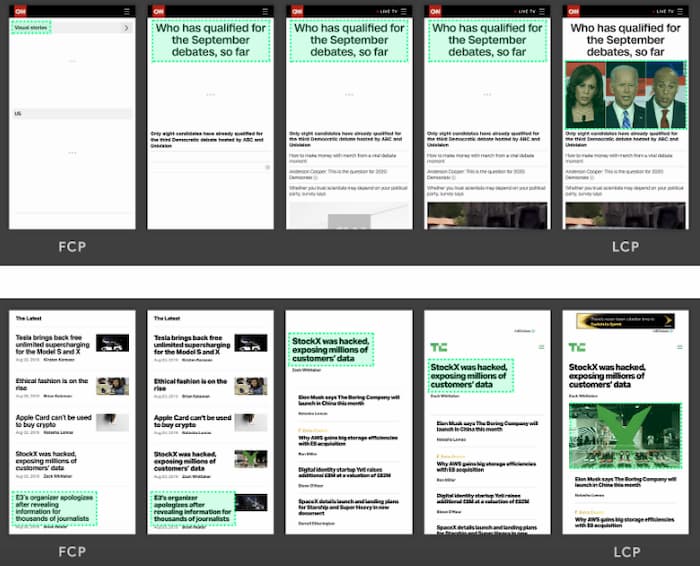
Here is an example of where the LCP loads closer to the beginning of the pages total load time.
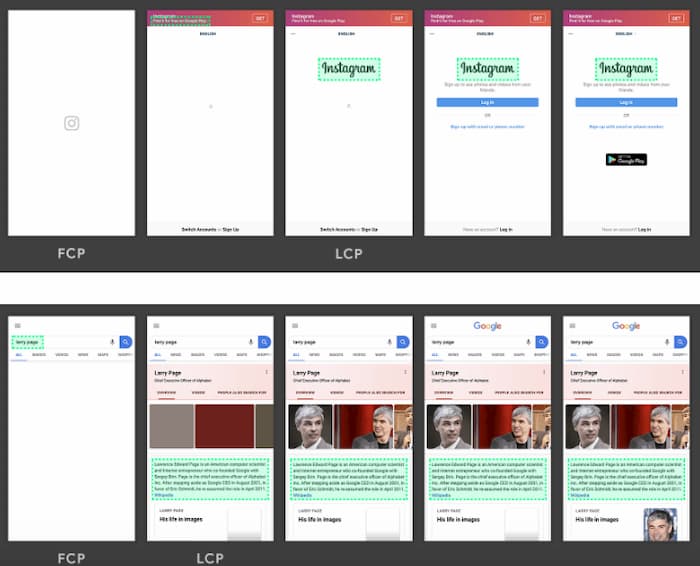
To provide a good user experience the LCP of your website should be at or under 2.5 seconds.
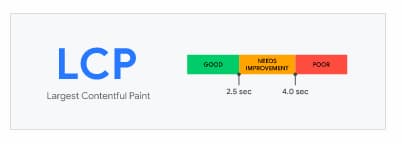
First Input Delay (FID)
The FID is a measure of the time it takes your website to be interactive. It measures the time it takes your website to respond to a command such as pressing a button, clicking on a link or interacting with an on-page feature.
The greater the delay in interactivity, the worse the user experience. If a user clicks on a button and there is no response they may click on it again or click on other buttons which can result in unintentional actions.
The FID should be maintained at a time no longer than 100 milliseconds.

Cumulative Layout Shift (CLS)
This aspect of UX is a big one because it deals with the stability of your website. The CLS measures the time it takes your website to stabilize (stop shifting completely).
Consider a situation where the user sees two very different options and attempts to select one but at the last second the layout changes causing an unintentional selection.
Below is the perfect example of how this can result in a detrimental user experience.
The CLS standard to maintain a good user experience is 0.1.
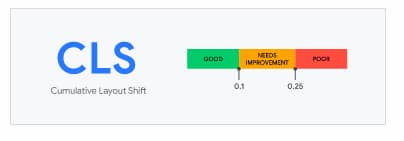
How will the Page Experience Update affect your business?
The answer to this, like most things SEO-related, is it depends. It’s hard to say exactly what this update means for your business specifically, but in the general sense, this update will affect everyone.
Content will always win over page speed
For those who aren’t competing for extremely difficult keywords, you may have some leeway when it comes to the technical side of page experience. If your content is the best solution to search intent you may not see any changes in your keyword positions and ranking.
Content trump’s most ranking factors. You may have a slow website, but if users love your content Google will surface your website over another that has fast page speed with weaker content.
We have to put it into perspective that although page experience is a ranking factor, it won’t be as influential as a page’s content and above all, its relevance to a search.
Brand searches would remain unaffected
Would it make sense that if a user types in Home Depot, that Home Hardware shows up first because their site is faster than Home Depots? Or if the site becomes interactive quicker than Home Depots, does it deserve to outrank it in a brand search?
Hopefully, you answered no.
At the end of the day, page experience is just a ranking factor that must be taken into the context of the search query. Relevance would mandate that brand searches will still return the pages from the actual brand itself.
Opportunity to gain a competitive edge
On the flip side, if Home Depot and Home Hardware are both competing for the keyword how to fix a leaky faucet then page speed may start to play a bigger role in the search.
Let’s assume both pages have similar content, similar links yet Home Depot’s page takes 10 seconds to load, while Home Hardware’s page loads under 2 seconds. Here are a few advantages that start to accumulate.
- More users will stay on the Home Hardware page.
- More users will leave the Home Depot Page before it loads.
- More users will click through more pages of the Home Hardware website.
- More users will reach conversion goals on the Home Hardware page.
- More users will spend more time on the Home Hardware page.
Better engagement statistics mean a higher ranking.
All of these factors paint a picture of how users are interacting with both pages. In the case where page speed breaks ties, it will eventually mean the page that performs better, will rank higher. Higher rankings lead to higher click-through rates, increased traffic, leads and revenue.
Improved user experience leads to higher rates of conversion
Apart from a better ranking on Google, all companies should be considering their user engagement statistics seriously. Typically, what’s good for users is what’s good for search engines, so the Page Experience Update in May is just another hint at what will improve the quality of your website.
Page speed directly affects page performance
Google published some shocking stats a few years ago regarding the likelihood of a visitor to stay on your site with slow page speed. Here are the stats Google reported:
Page speed vs. bounce rate
The bounce rate is defined as when a user lands on your page and backs out without interacting with anything else on your site. A bounce is registered when there are no other pages visited, no links clicked.
The bounce rate of the pages on your website can be found by visiting Google Analytics and running a report under Behavior, Site Content, All Pages.
The bounce rate is a measure of the percentage of visitors that land on your page and back off without any further interaction. High bounce rates become a concern when you want visitors to take a specific action on your page. You’re essentially losing traffic, which in many cases, can be traced to slow page speed.
A real-world example of how page speed affects your business
Assume your website has the best content and ranks #1 for an important keyword. The problem is your page takes 10 seconds to load. According to Google, even though a user will most likely click on your page (it’s the #1 result) there is a 131% chance that they will leave if your page takes 10 seconds to load.
Let’s assume that they wait 10 seconds and even read your content. Do you think they are going to wait another 10 seconds to read another page? The chances of a user clicking through to other content have completely diminished because every click is a 10-second wait.
There’s a 131% chance they will back off your page and go to the #2 website.
Let’s assume that the #2 website loads in less than 2 seconds. Viewing multiple pages is easy and fast. The user can read more about the company and get a better idea of what they’re offering.
There’s a much higher probability the user will fill out a contact form or complete a goal conversion when they spend more time and click through more pages on the site.
How do the page experience ranking factors affect my business?
And it’s not just page speed that is in question. There are now additional loading factors (CLS and FID) that Google is telling us can negatively affect the user experience. Keep in mind that the entire page experience encompasses four more of the aforementioned categories that currently influence ranking.
SSL / HTTPS
HTTPS refers to the secure socket layer that is installed on your website. Your SSL certificate is like your internet passport that proves your website is what it appears to be.
Without an SSL certificate, websites can hide malicious software, disguise their identity and attempt to give you a virus or potentially steal sensitive information from you. To reduce the number of harmful websites, Google made HTTPS the new standard for security.
This means your website encrypts data and guarantees a user that a website is exactly what it appears to be. If your website is not conforming to this standard you’re losing one of the ranking signals that Google has already confirmed affects your search visibility.
When browsing on Chrome, a website without an SSL will show as insecure.
Do you think you might lose visitors if this is what they see before they click on your website?
To get to your site you have to click on Advanced and then proceed which I think we all can agree is not an enjoyable user experience.
Mobile Friendliness
It should be no surprise that the mobile-friendliness of your website is a ranking factor. After all, more than 50% of total searches are made from mobile devices. Google rewards and penalizes sites (mildly) based on the mobile user experience.
Apart from adjusting the layout to make things more user friendly, there are also specific aspects of web design that could affect mobile usability. For instance, if the font is too small or buttons are too close together.
Although a developer may have made a website responsive, you may need to make minor adjustments to improve the page experience for your visitors.
Safe browsing
This best practice ensures that there is no malicious content on your website such as malware. This refers to unwanted software that is harmful to a computer, mobile device, or software. It can be downloaded from a website, without the user’s permission or knowledge by attaching itself to a downloadable file.
Websites that contain this type of content will lose search visibility as it is deemed detrimental to the user experience.
No intrusive interstitials
How much do you love when you land on a page and a pop up completely blocks access to the page without any options given to exit the screen? This is an example of an intrusive interstitial.
Pop-ups, popovers, or annoying advertisements degrade the overall user experience by blocking access to the content the user intended to see in the first place.
Google penalizes websites that utilize ads or sign up forms that don’t provide an easy exit button. Cornering your users into making a decision is considered against best practices and warrants a negative ranking signal.
Provide an enjoyable page experience
Just to be clear, the page experience ranking factors have been around for some time. It is the addition of Core Web Vitals that will take effect in the next Page Experience Update scheduled for May 2021.
Although the impact on ranking can be speculated to be somewhat minimal in most cases, it should be noted that every competitive edge you can add is worth the effort. Not only will this tip the scales in a head to head tiebreaker in competitive situations, but your conversions increase when you provide a better UX for your visitors.
Take the hint Google is offering, along with a plentiful heads up to prepare for yet another update intended to improve the overall quality of the user experience.
Attract More Website Visitors On A Shoestring Budget
The situation is you’ve launched your new website and yet the damn thing cost you damn near every penny you own. It was a mistake not to consider SEO with your web design, however, you’re at the point where you need to attract more website visitors, but you’re not sure how.
If this is the case, you’re definitely reading the right article. This article provides a basic outline to attract more website visitors without all the expensive tags and tools. The truth is if you know your clients inside out you’ve already got half the battle won.
Although there is a lot of technical advice and work that needs to be integrated into your website, if you can nail down the following fundamental tasks, you can create a solid SEO foundation for your website and attract more website visitors from your efforts.
Create a buyer persona
Have you taken the time to sit down and think about who your clients actually are? Piece together details about your ideal client to create a buyer persona. This concept is invaluable since it serves as a guide for all of your marketing efforts.
A strong buyer persona surfaces many of the subtle details about the personality, traits, characteristics and tendencies of your ideal client. Using these details creates an advantage when it comes to creating content that resonates more deeply within your target audience.
We can even take it a step back from content creation and focus on the value a buyer persona has for keyword selection. Understanding the language, tone and major interests of your target audience gives you greater insights into the types of search phrases that are being used in searches.
Use this exercise as a powerful tool for focusing your entire SEO strategy. Identify who your buyers are, how they think, as well as their personal preferences to increase the impact of your efforts.
Choose the right keywords
Once you have a good understanding of who your audience is, you can create a list of keywords that would benefit your website the most. Keep in mind that just because your ideal client may use a keyword is a search doesn’t mean it’s the best fit for your website. You’ll need to consider the difficulty and value of the word to your business.
Avoid difficult keywords
If you’re a business owner doing your own SEO, you want to take the path with the least resistance. Sometimes you can tell when a keyword is highly competitive and sometimes it’s not as obvious.
For example, if you’re in the retail industry and one of your potential keywords produces a search result with Walmart, Amazon, Ebay, and a number of retail giants, you may want to pass on that keyword.
Without an intimate knowledge of on-page optimization, link building or any experience in outranking websites, you’re not going to beat these websites.
Look for comparable websites to compete with
The solution is to look for keywords where the search results produce comparable websites on the first page. This is where you want to start. Choose keywords where you can compete by publishing better content than what is out there.
Structure your keyword strategy
You can’t always avoid the difficult keywords in your industry. Sometimes they are the best options for taking your business to the next level. A keyword strategy is what will prioritize the keywords you’re pursuing for short-term wins and long-term goals.
Use a topical structure to form your content schedule and prioritize the major keyword targets. Using pillar pages and cluster content is an excellent structure for developing a marketing funnel that moves your readers along the buyer journey.
Publish answers to the questions people are asking
When you consider the fact that 80% of the total searches on Google are informational searches, it makes sense that being a resource puts your website in front of a larger audience. When you can be the best solution to a keyword search, your website surfaces more often on the first page of Google.
Blogging is a top method of traffic generation
This is a big reason why blogging has become one of the best ways to produce leads and build awareness of your brand. Your blog content should be based on providing answers to commonly asked questions and publishing solutions to commonly faced problems. When your content can help a visitor with an issue they’re facing, it builds trust and confidence in your expertise.
Publish long-form, in-depth content
There is much to be said about search intent since it is the primary ranking factor that search engines use to display the top 10 results, however, there are distinct advantages to publishing long-form, in-depth content. It’s not the length that provides the value, but the depth (which in most cases is the reason it ends up being long-form content).
“Ultimate guides” are more common
Publishing an “Ultimate Guide” has its advantages. When you can cover a topic in its entirety, it becomes a resource for those who are searching to learn more about the topic. There are multiple keywords that your content asset ranks for because it addresses multiple aspects of the keyword topic.
Producing a content asset that becomes “the final destination” of a search will generate high volumes of traffic. Look for opportunities to create a content asset within your niche to create evergreen content that lives on indefinitely because of the value it provides.
Publish content as often as possible
The more often you publish content, the more leads you generate for your business. In fact, a study revealed that small to medium-sized businesses that publish 11 times a month experience 3.5 times more leads than those that published twice a month.
Just to be clear, don’t publish content, just for the sake of publishing content. If your pages are subpar in quality and don’t drive traffic, your website could become bloated which will drag down your search visibility.
Publish content with the intent of being the best
Publish content with the intention of ranking in the number one position. Make it a mission to be the best solution to search intent. If you’re approach is to continuously produce content that outperforms your competition, you’ll see a difference in the number of keywords your website ranks for which will be reflected by increased traffic.
Target a new keyword with each page you publish
Every page on your website should target a specific and separate keyword. Avoid publishing pages that target the same keyword, phrase or have the same search intent. This is where your keyword strategy comes into play.
Stick to your keyword strategy
It’s best practice to map out the keywords your website will target. Create a content schedule based on the topic cluster you’ve outlined for your website. This way your website is organized topically and you can visualize the way your content covers a broad topic.
If you publish pages that target the same keyword, they are essentially competing with each other. This can spread the resources thin on the efforts you put into ranking that page to the top 10 search results. Rather than focusing on two pages, you can combine content and point backlinks to one page for a higher rank in the top ten.
In most cases, it’s better to have one page that ranks in the top three results as opposed to two pages that rank outside the top three results. The reason is there’s a huge drop in the average click-through rate that a website receives from positions 1-3 to 4-10.
Be an expert where your expertise is needed
People are always looking for answers online. Google is becoming the go-to solution for providing the fastest results, but not all people search this way. There are still those that seek help on social media and niche forums. You can drive targeted traffic to your website by helping people with answers to their questions on these sites.
Social media
Every industry has a social media website or two that works well for generating leads. Make sure you’re on the website that is best suited to your business. You can’t really go wrong with Facebook since there’s a group for everything. After all, they have about 3 billion users that are on the site so it’s likely you can drum up some business using them as a source.
Be smart about it. Linkedin is excellent for big-ticket sales and for B2B marketing. Instagram and Pinterest convert extremely well for retail product sales.
Get some help with free software
You can use tools like Buzzsumo to find out what’s being talked about and shared the most in your niche. Join these groups and conversations to get involved with what people are saying and more importantly what questions they are asking.
Answer questions honestly and avoid being overly promotional. People appreciate transparency and they appreciate good advice even more.
Drop a link or two to your website whenever it applies to give people a way to learn more about what you offer while sending them to an article that is relevant to the conversation.
Niche forums
You can accomplish the same task of answering questions on niche forums. In fact, it may be easier to get to a lot of questions since the main reason people are on forums is to ask and answer questions.
Quroa
Quora is one of the largest Q & A websites where you can get a high volume of traffic to your site by answering the right questions.
Quora is ideal because they allow full HTML responses with links (nofollow only) which means you can take excerpts of your blog posts and paste them in as answers with a link to read more. You can literally help people while promoting the content you’ve already written.
The bonus to Quora is that many of the questions on Quora happen to surface on the first page of Google search results. If your answer is the most upvoted, you not only get the thousands of views from Quora but the search traffic from Google as well.
Monitor keyword mentions
Use software such as Mention or Brand Mentions to be alerted to conversations where your keywords are mentioned. If there are conversations on social media going on that you can contribute to, wouldn’t it make sense to be alerted so you can join in and give your two cents?
Attract more visitors to your website on a regular basis
This entire article has been dancing around the plain facts that if you have expertise to offer make it easy for people to find you by helping them. When you make helping people your first priority you improve your ability to target the things that mean the most to your ideal visitor. This approach makes your content more effective and builds more trust in your brand.
On one hand, search engine optimization is getting more complicated because there are so many things that go into an optimized website.
On the other hand, the importance of providing an exceptional user experience has never waned and has remained THE most important factor that trumps all ranking factors.
Create your website for the benefit of users and use your expertise to help those in need. Put this concept into a keyword-targeted content schedule and you’ve created the best SEO foundation possible for attracting more website visitors.


